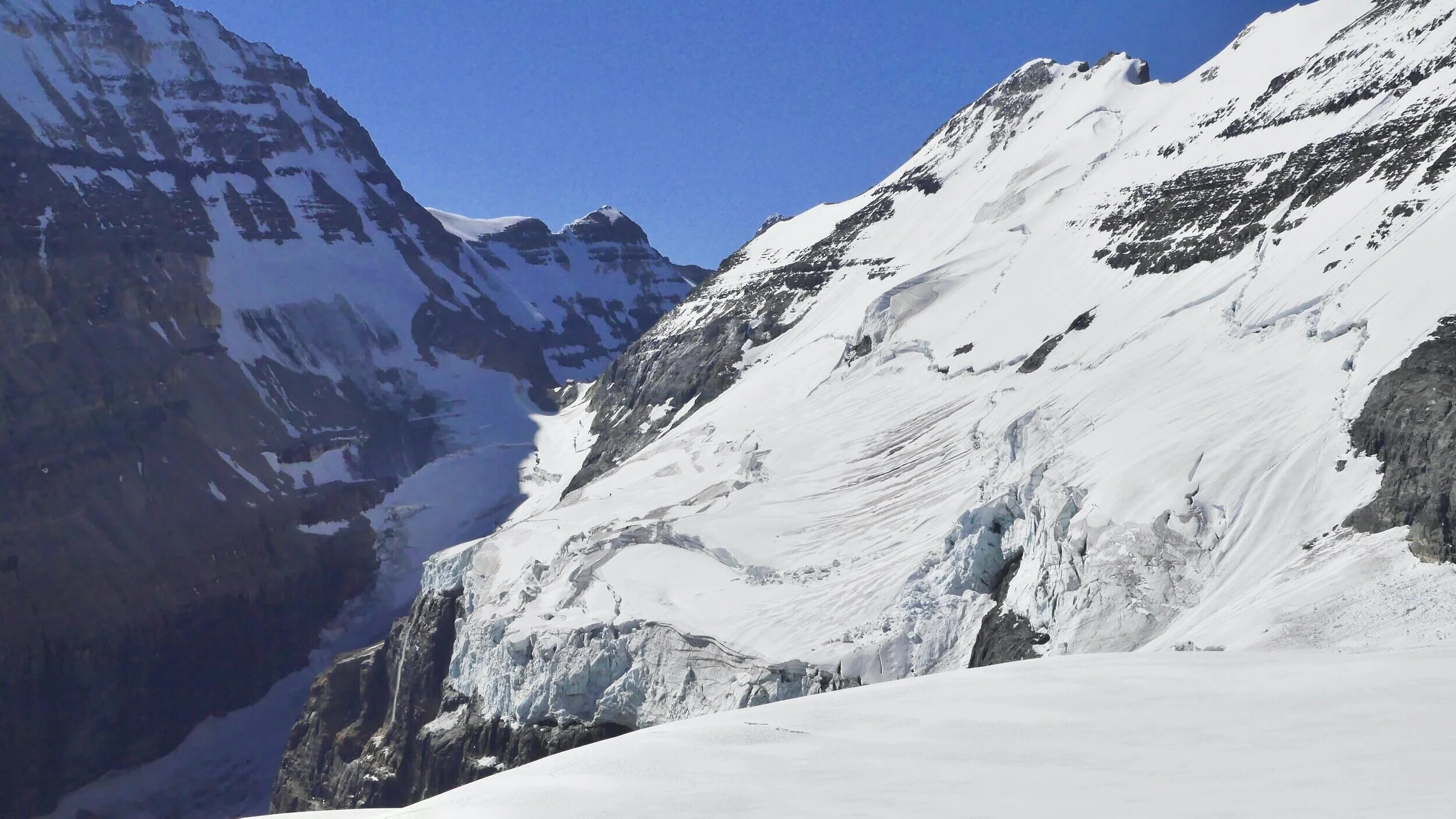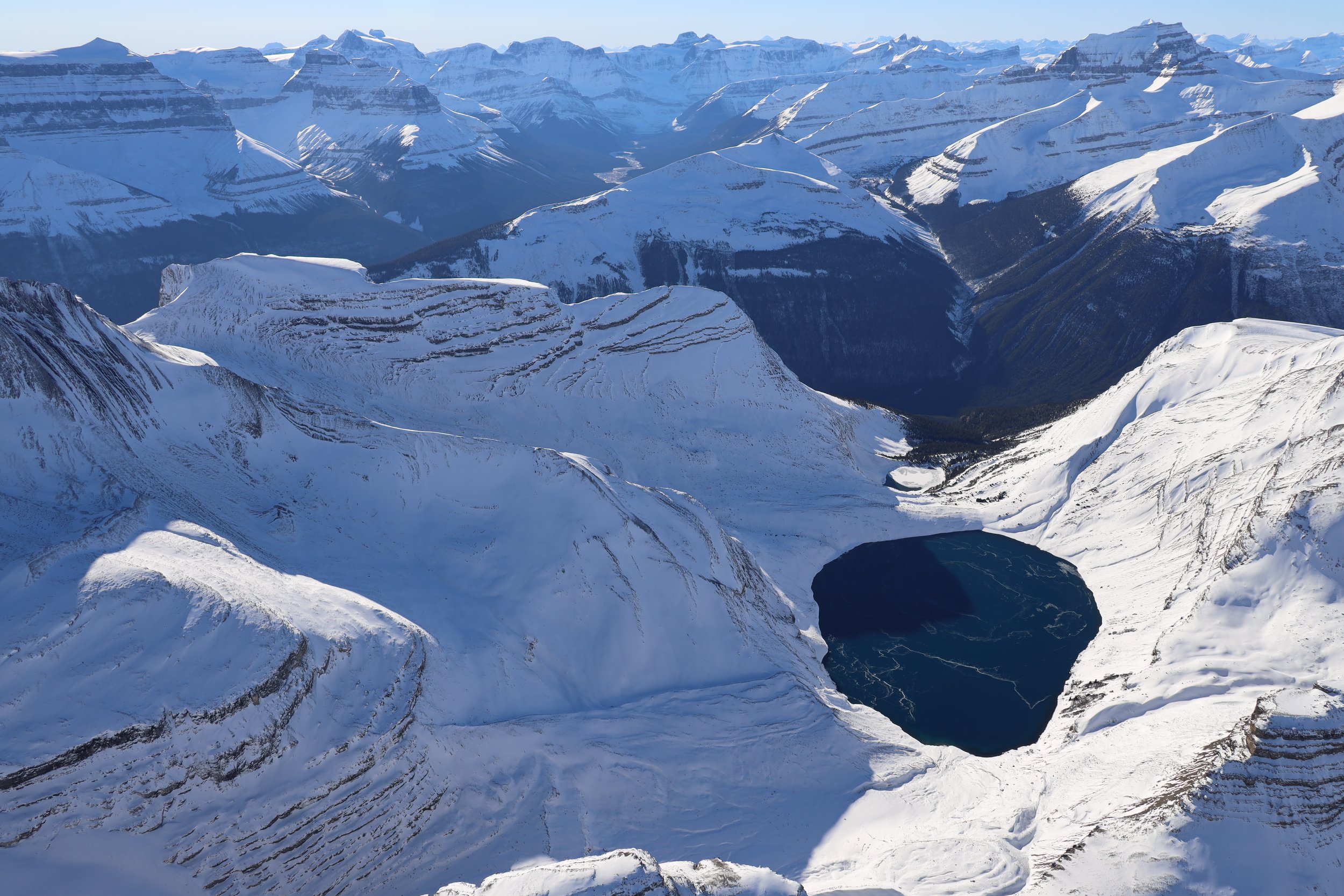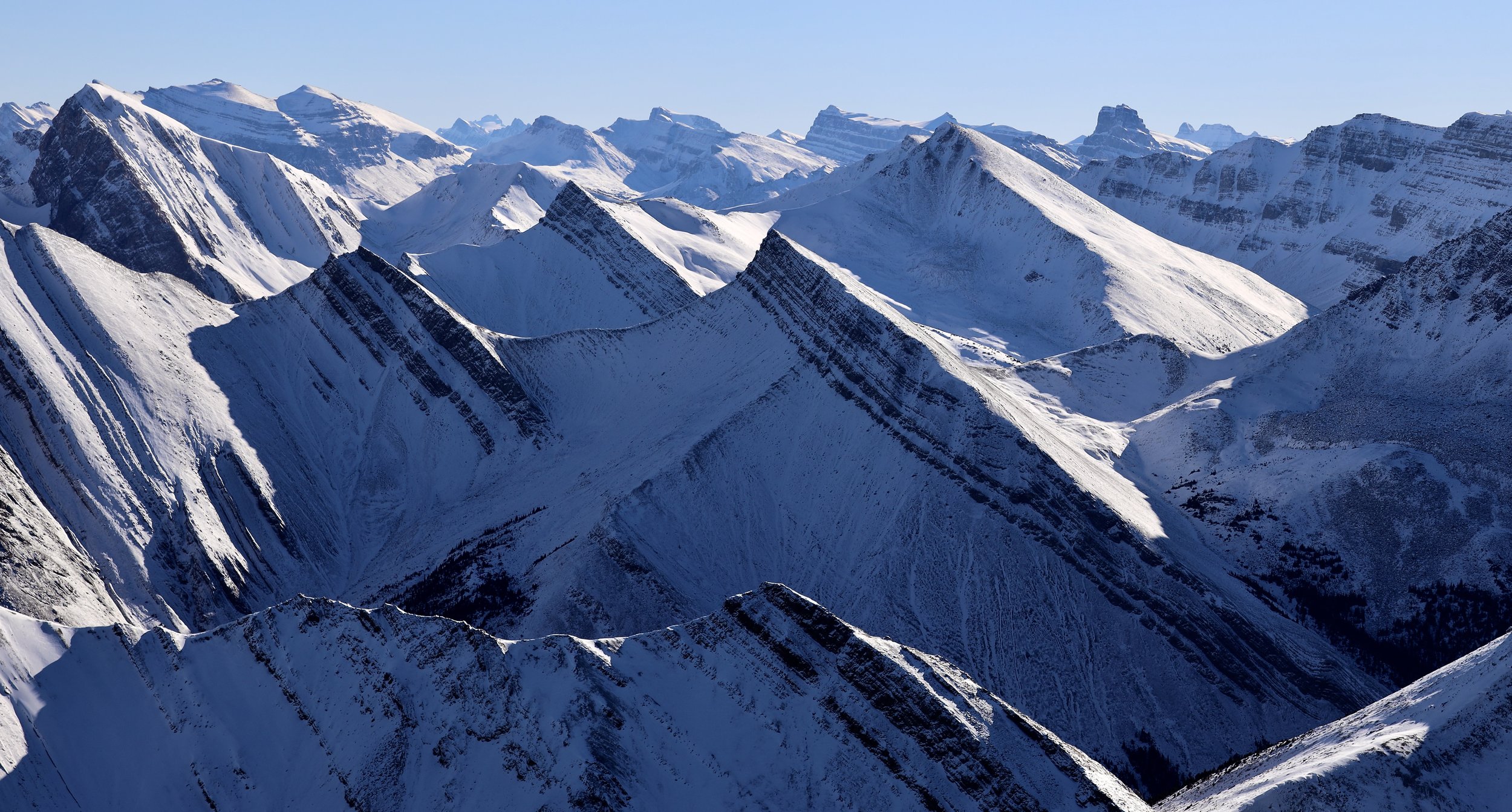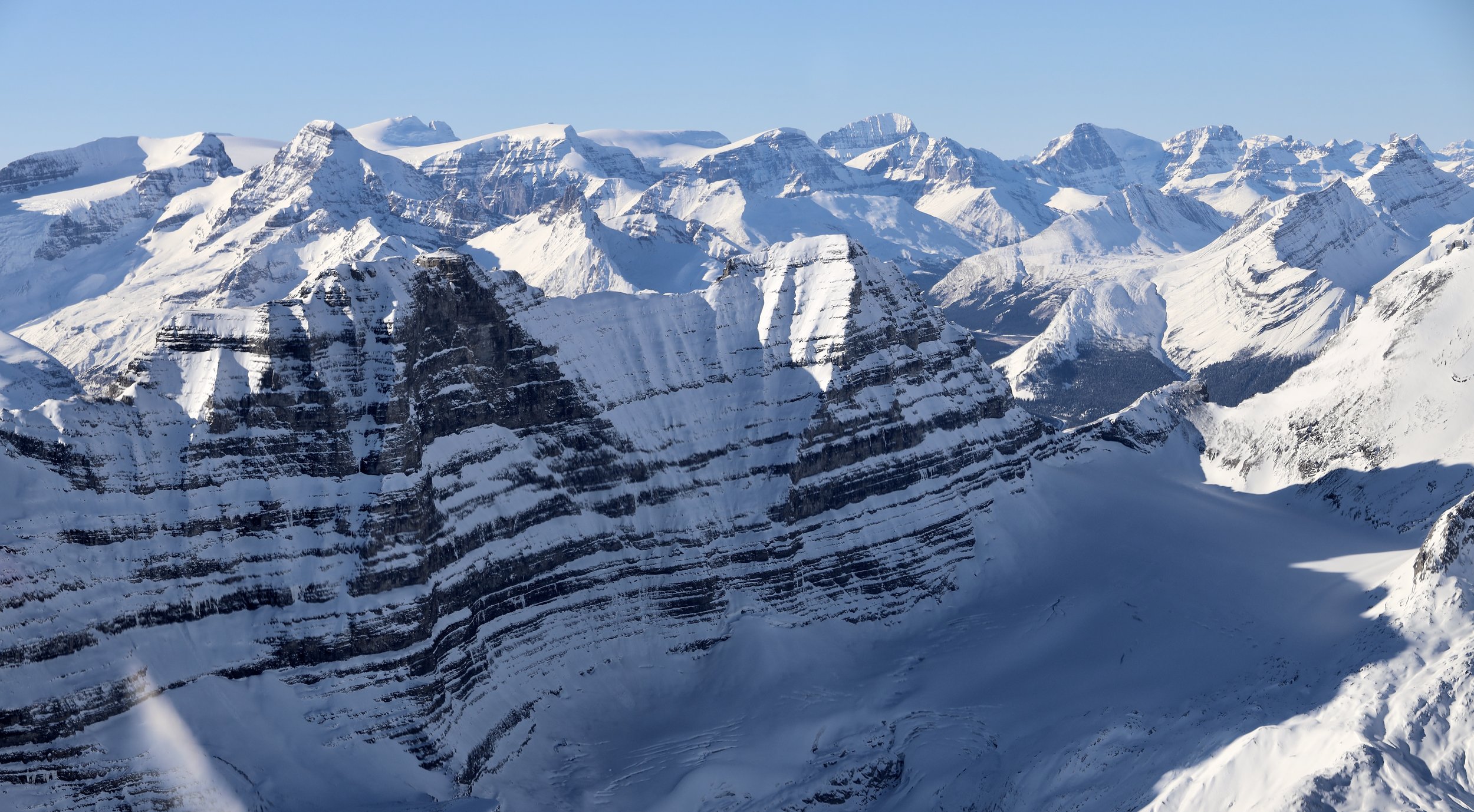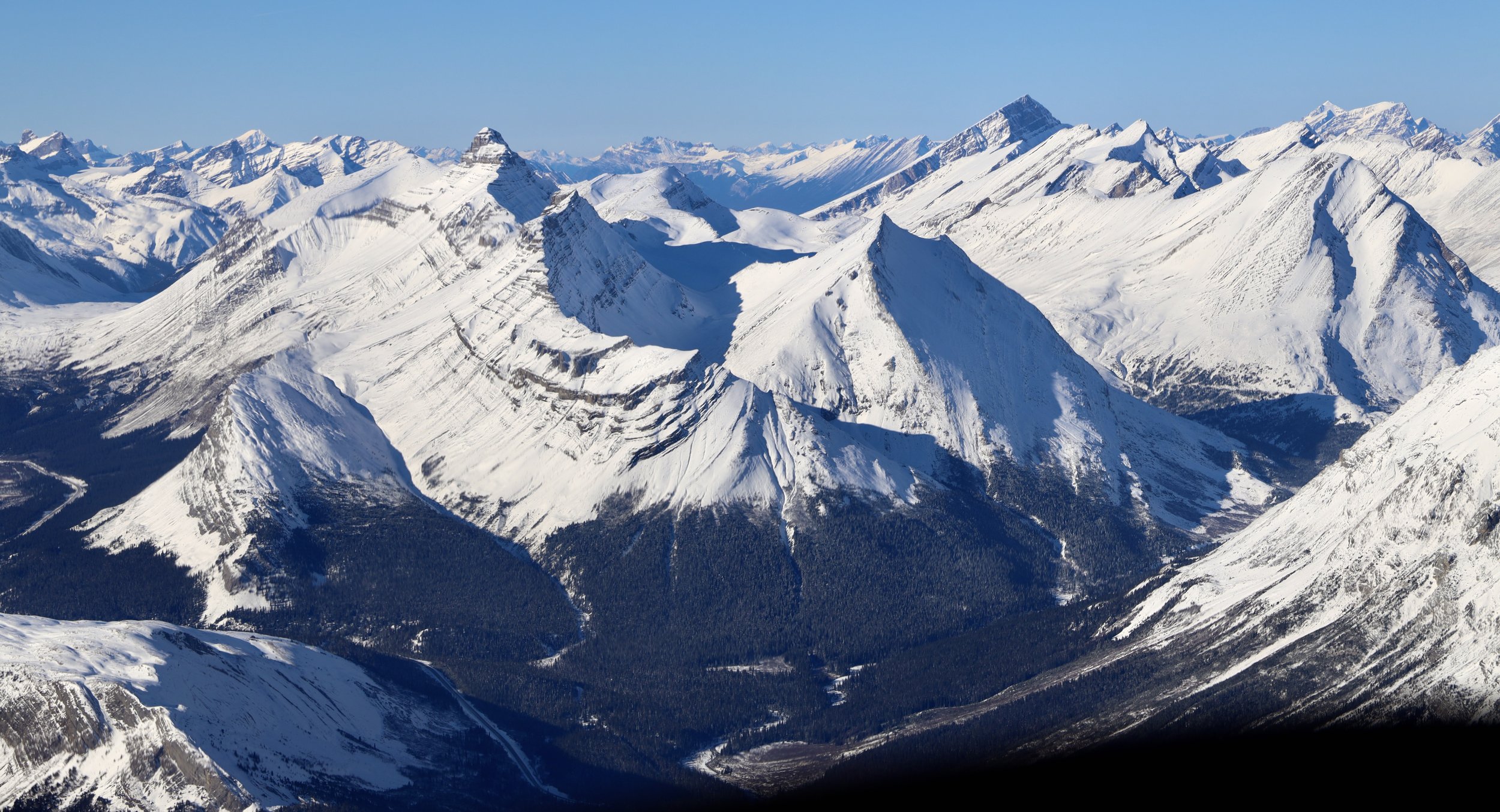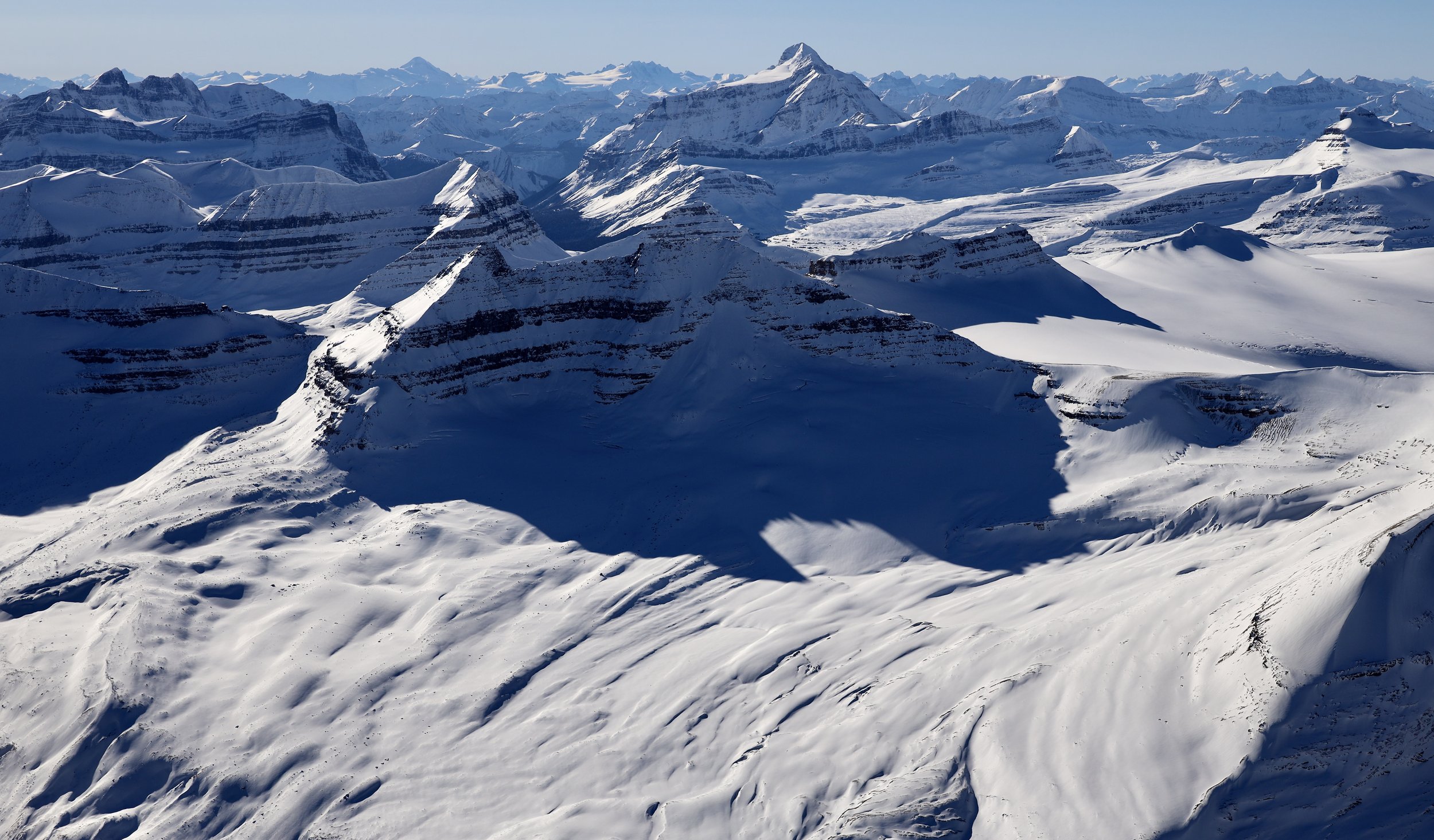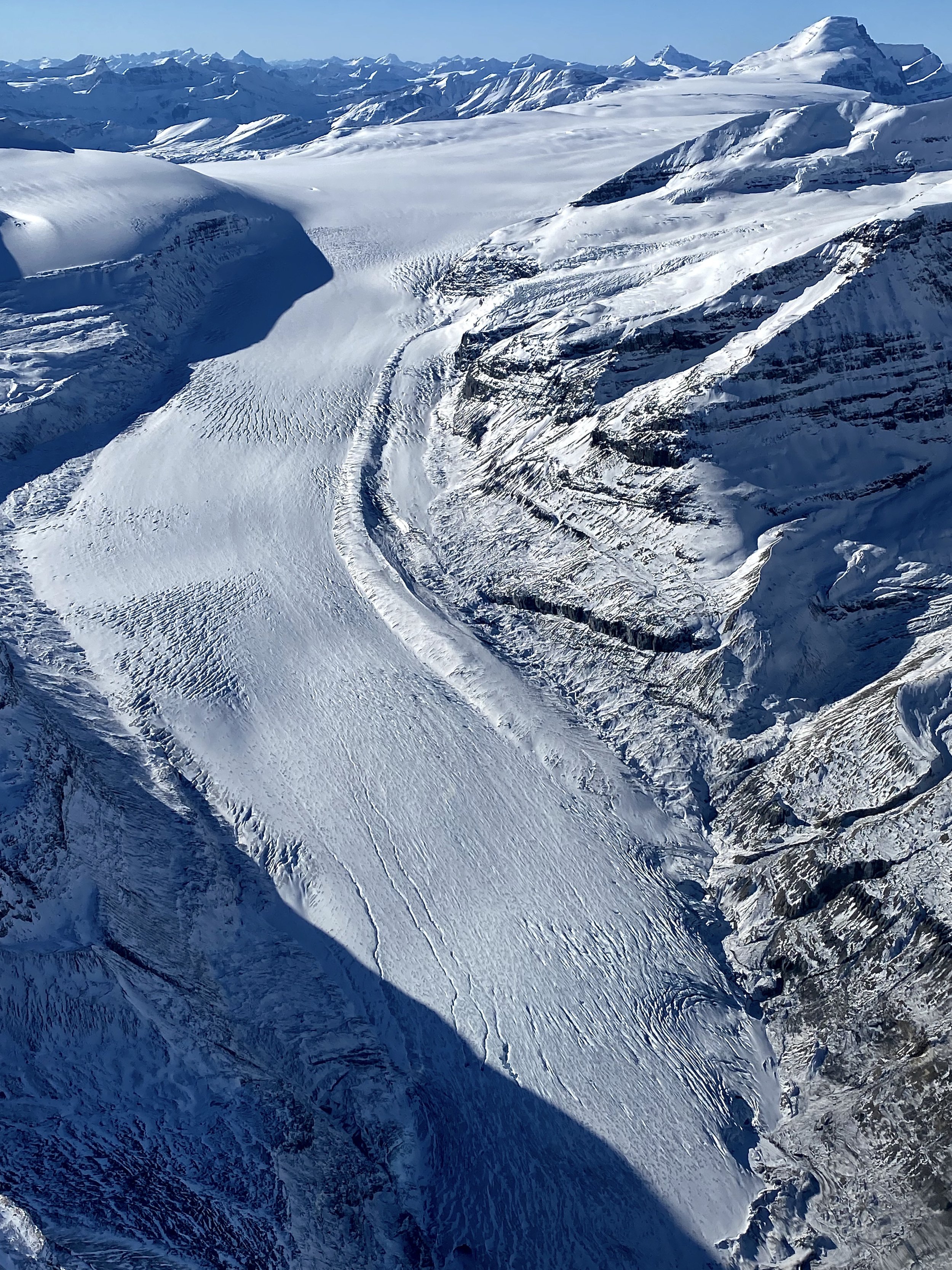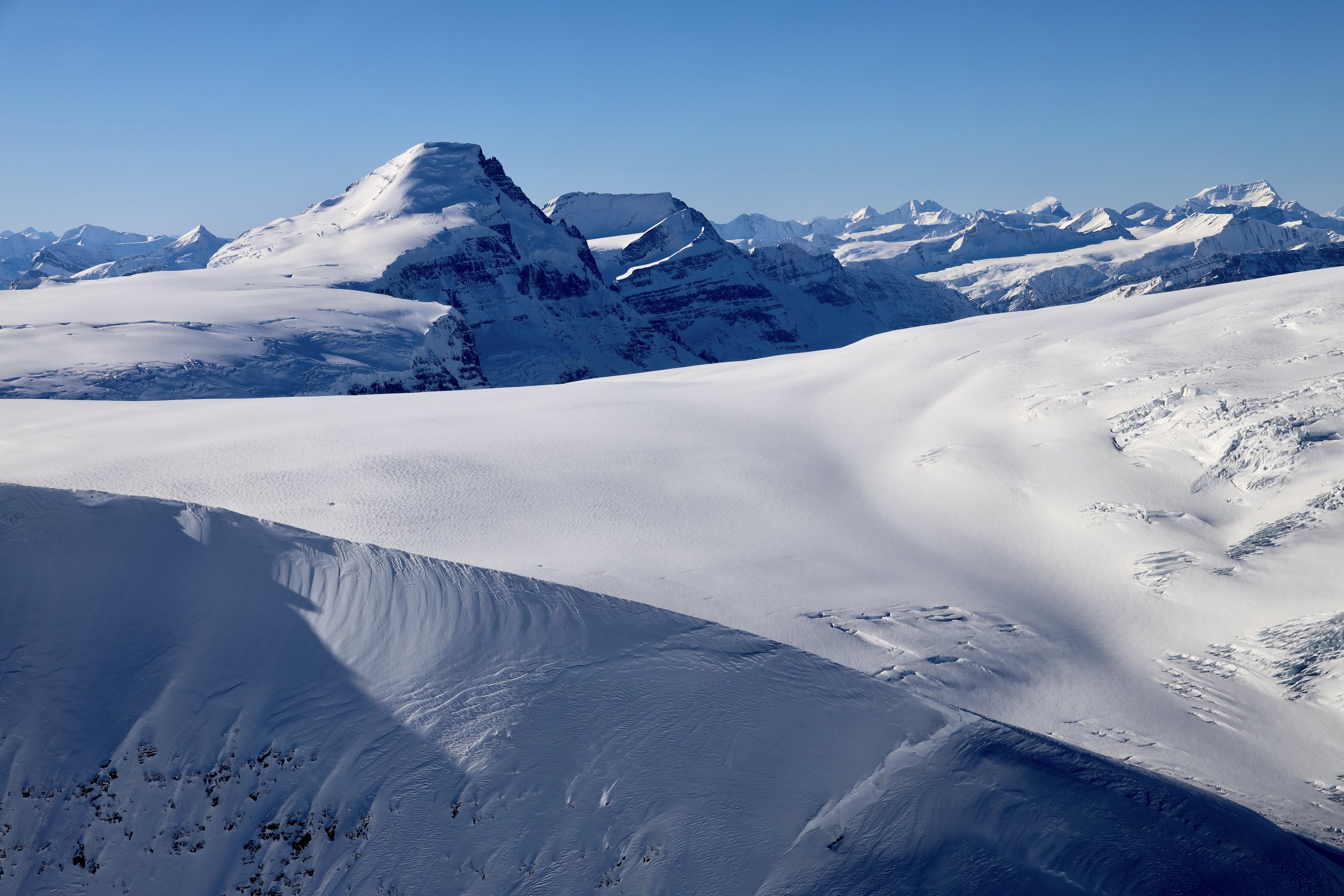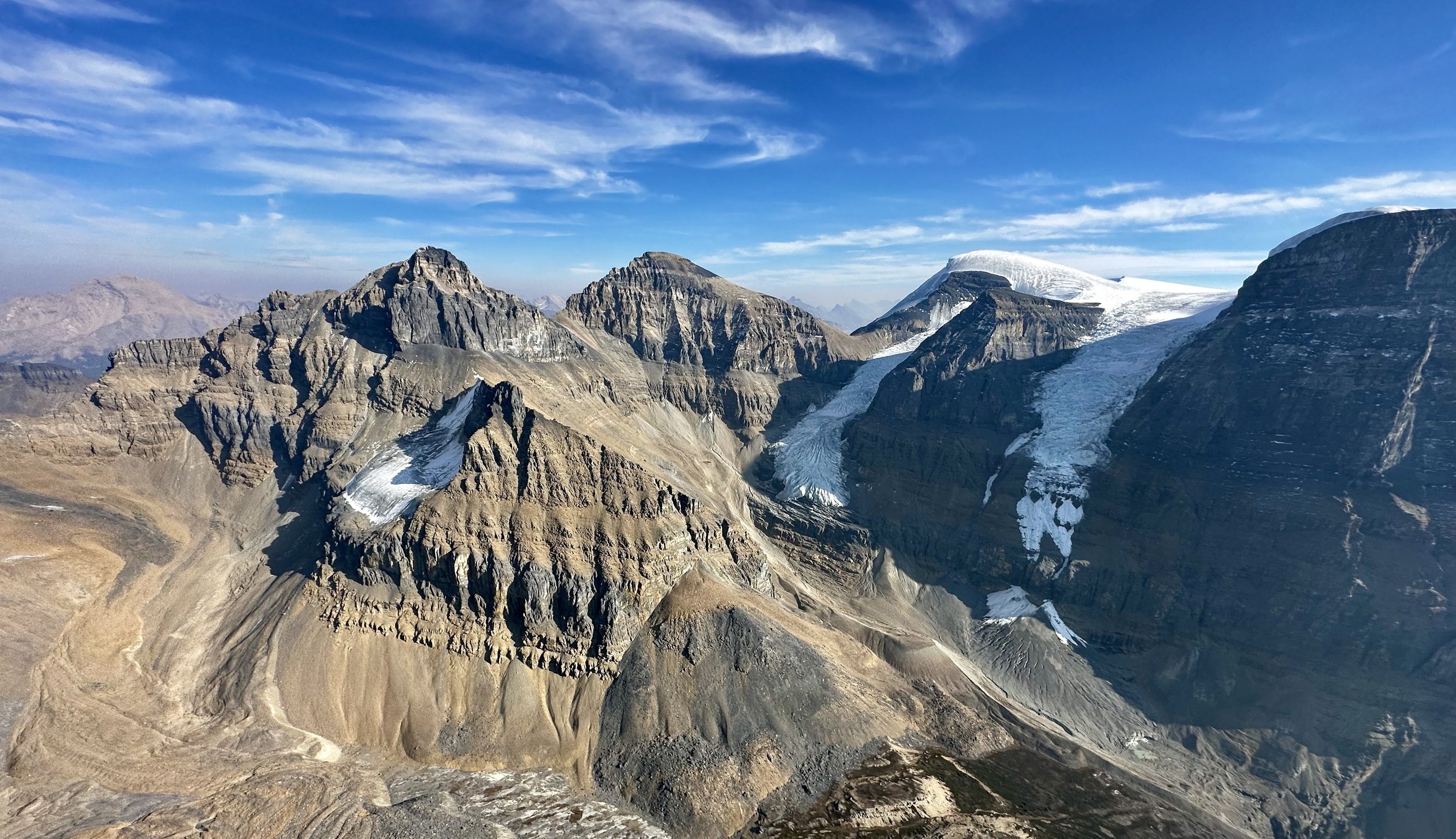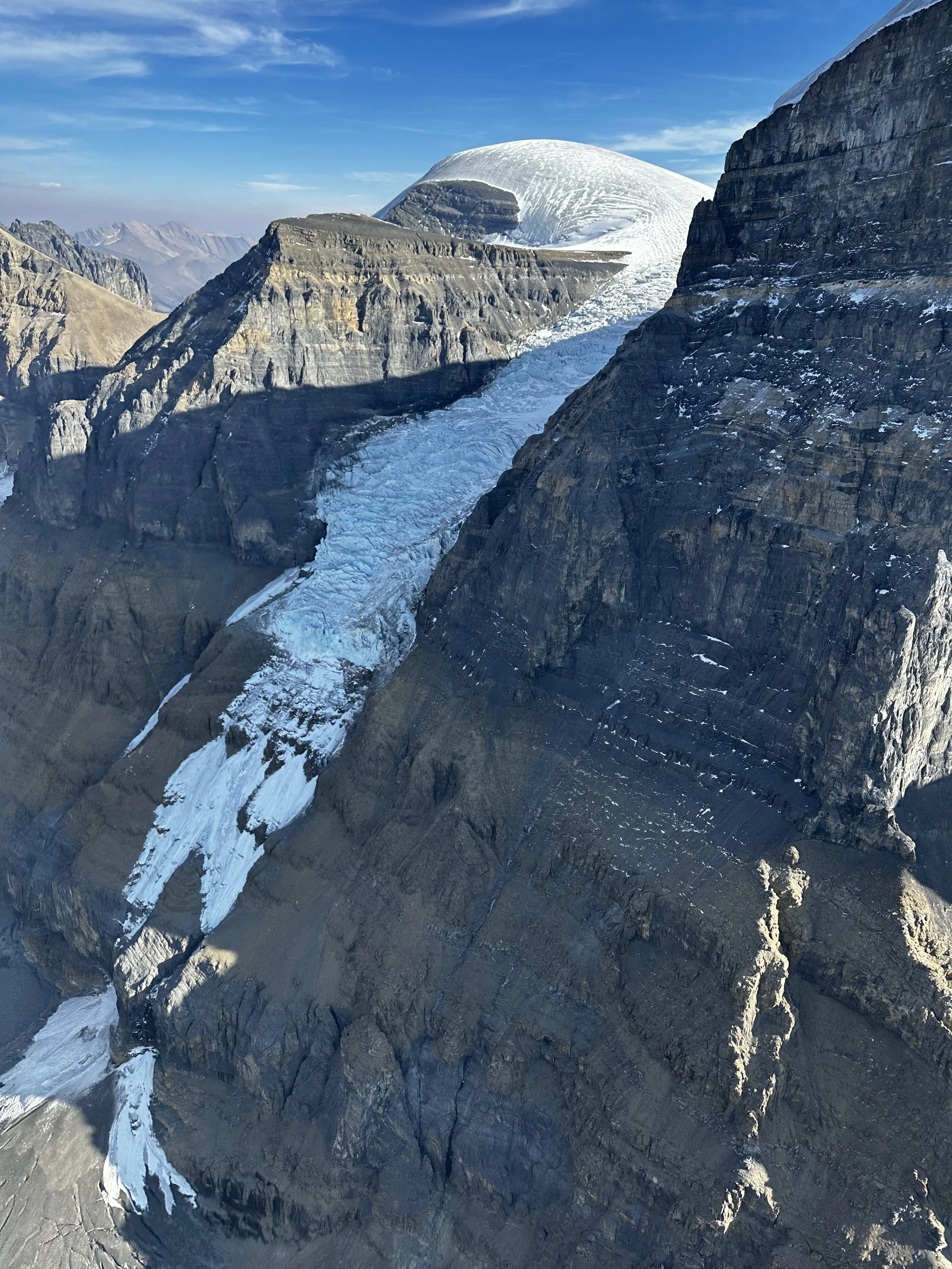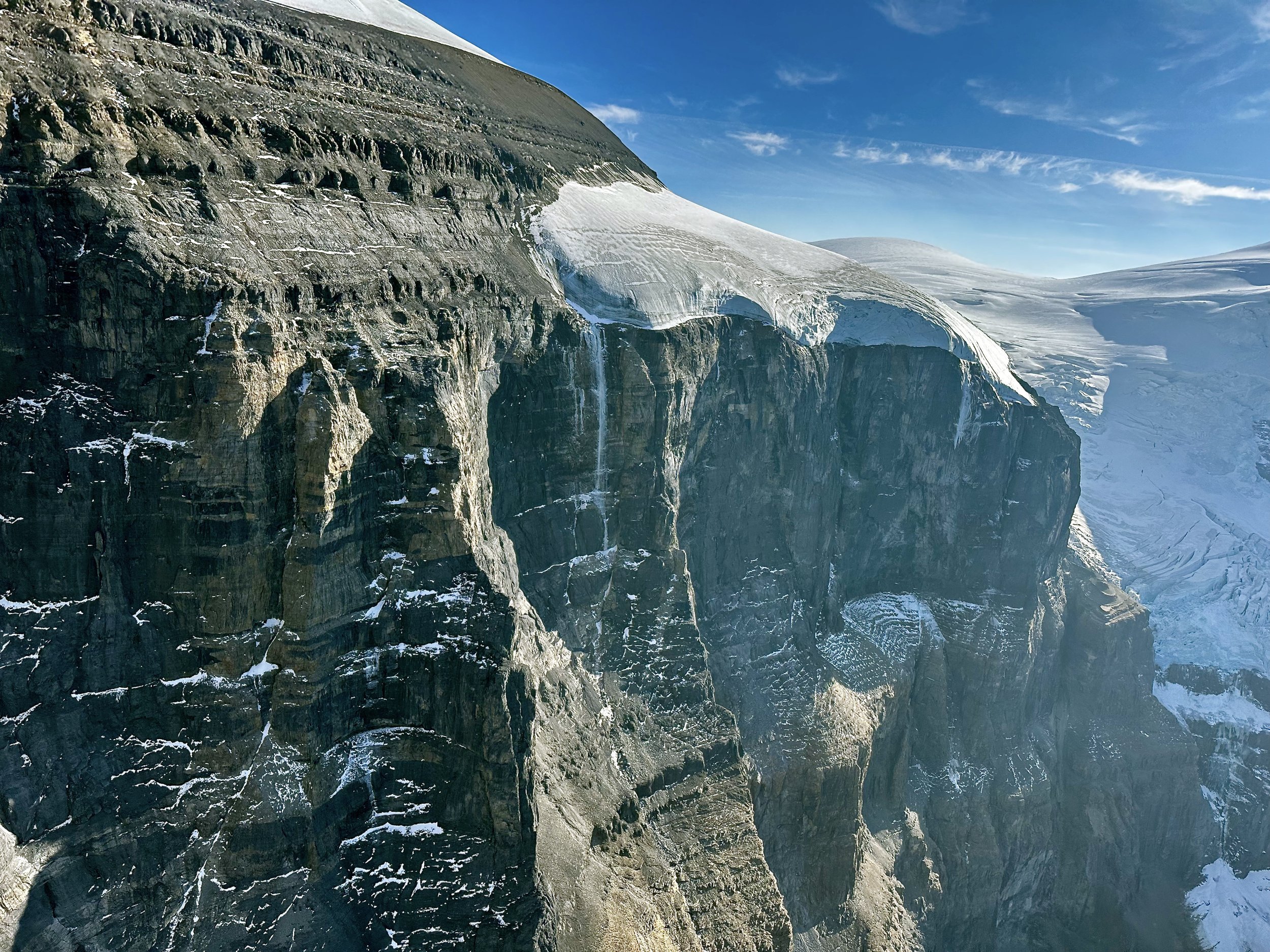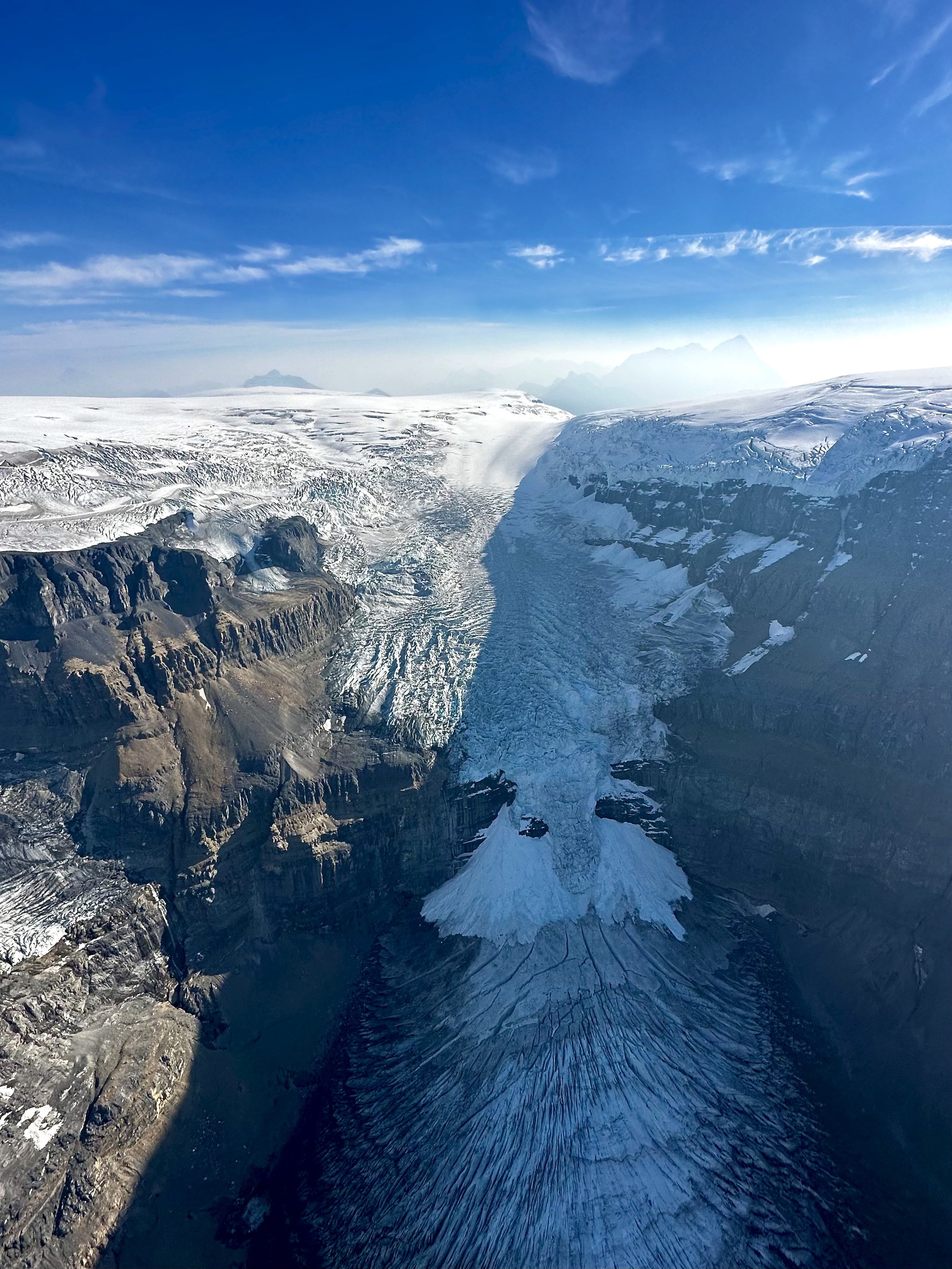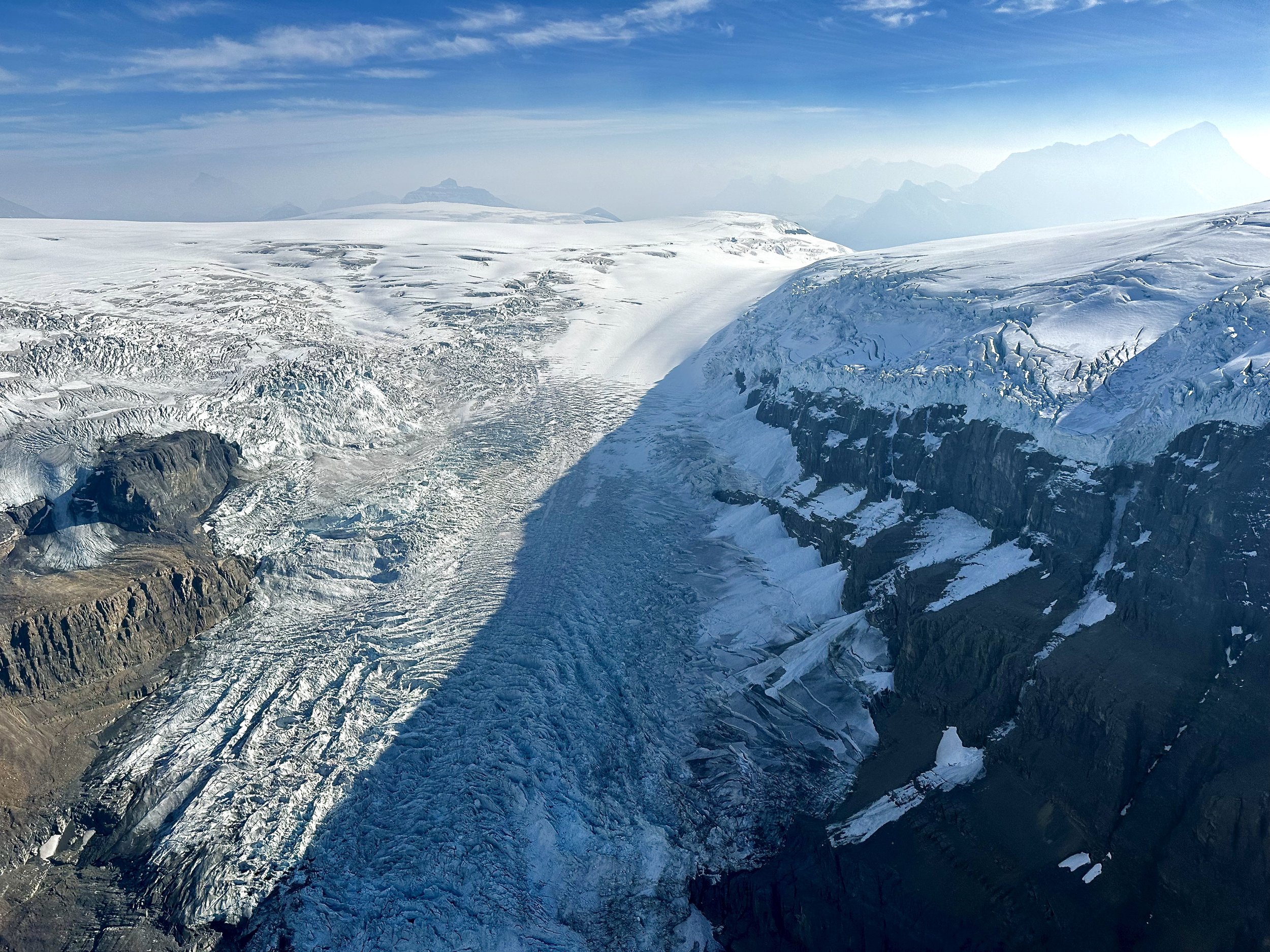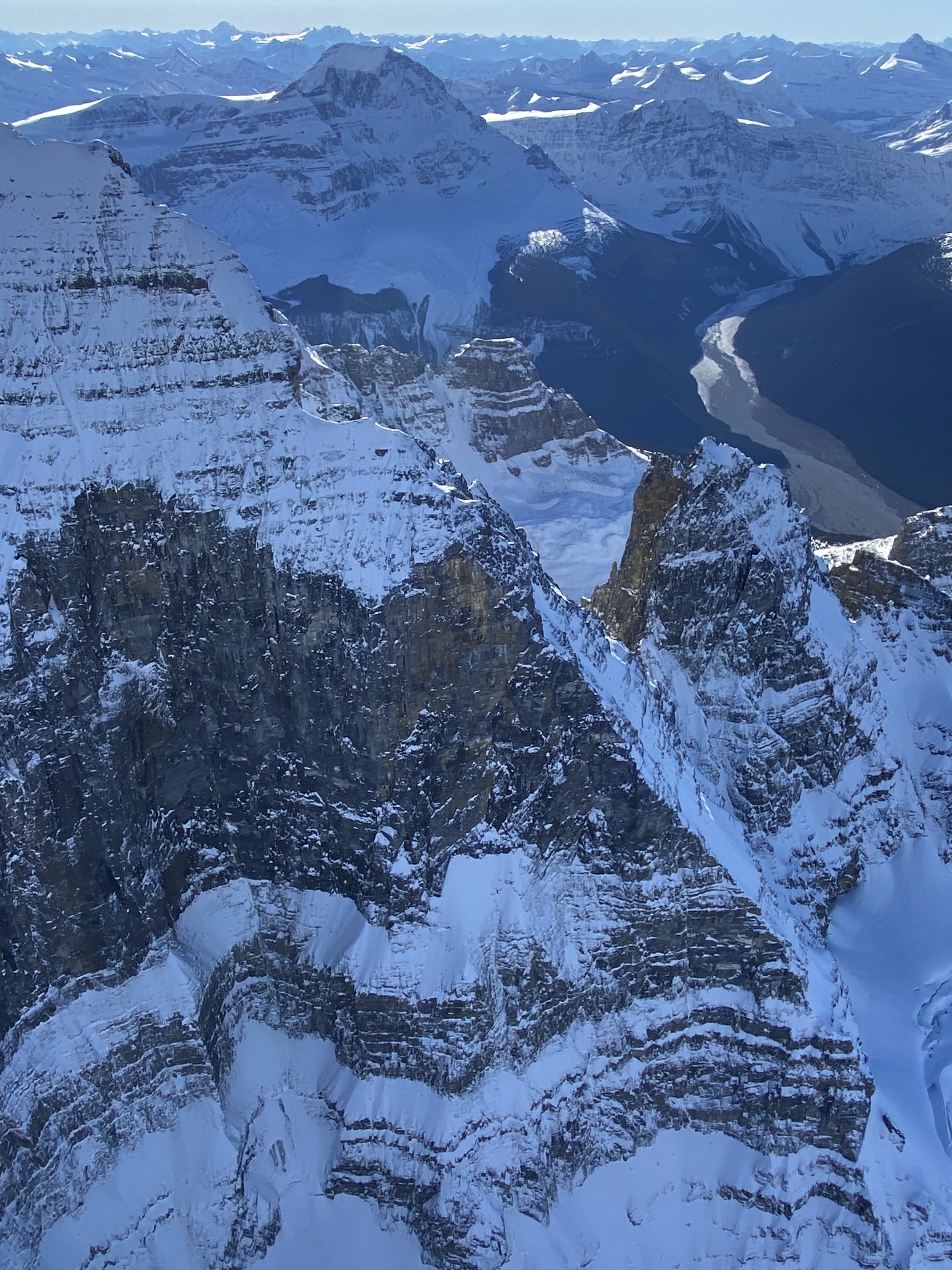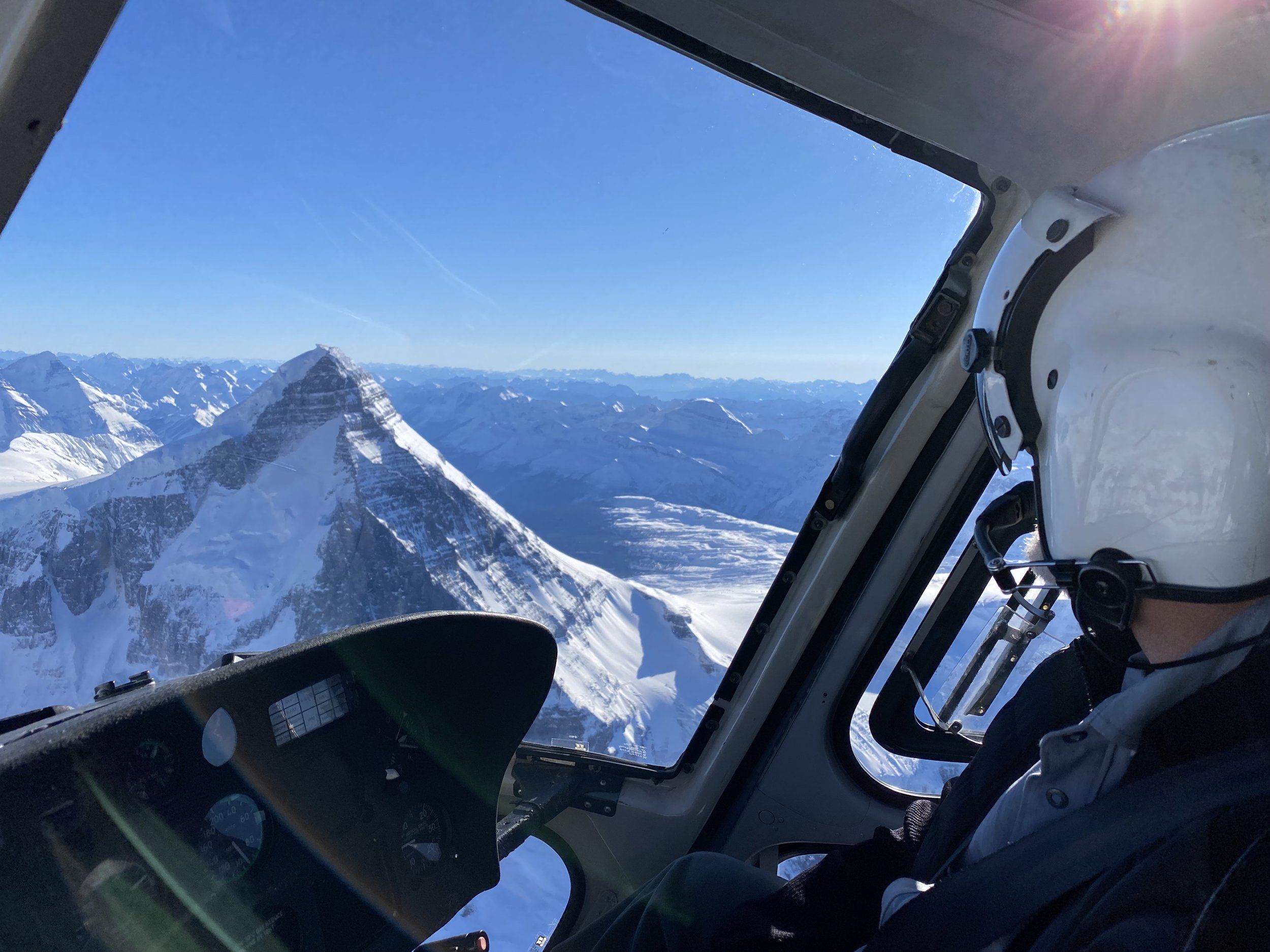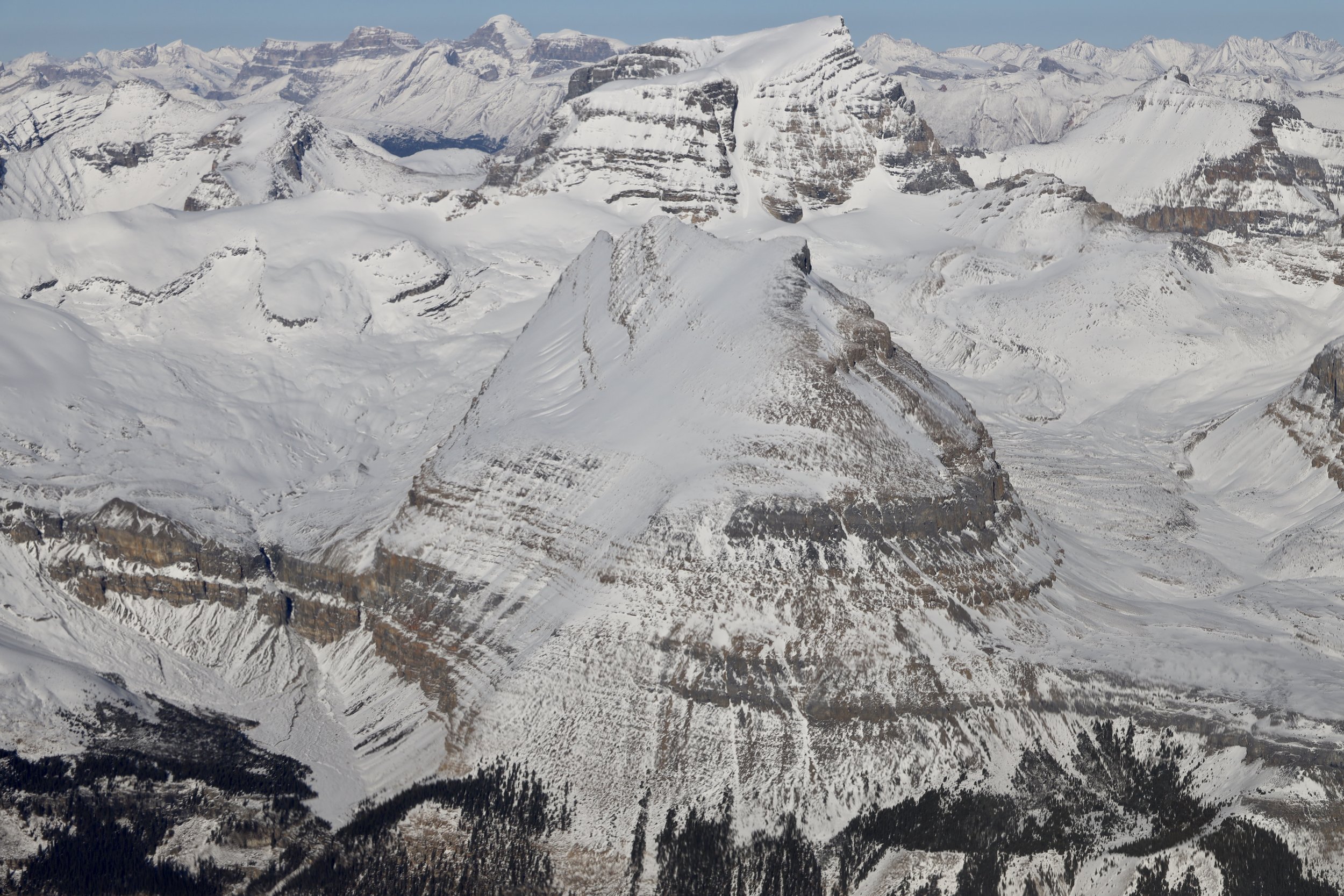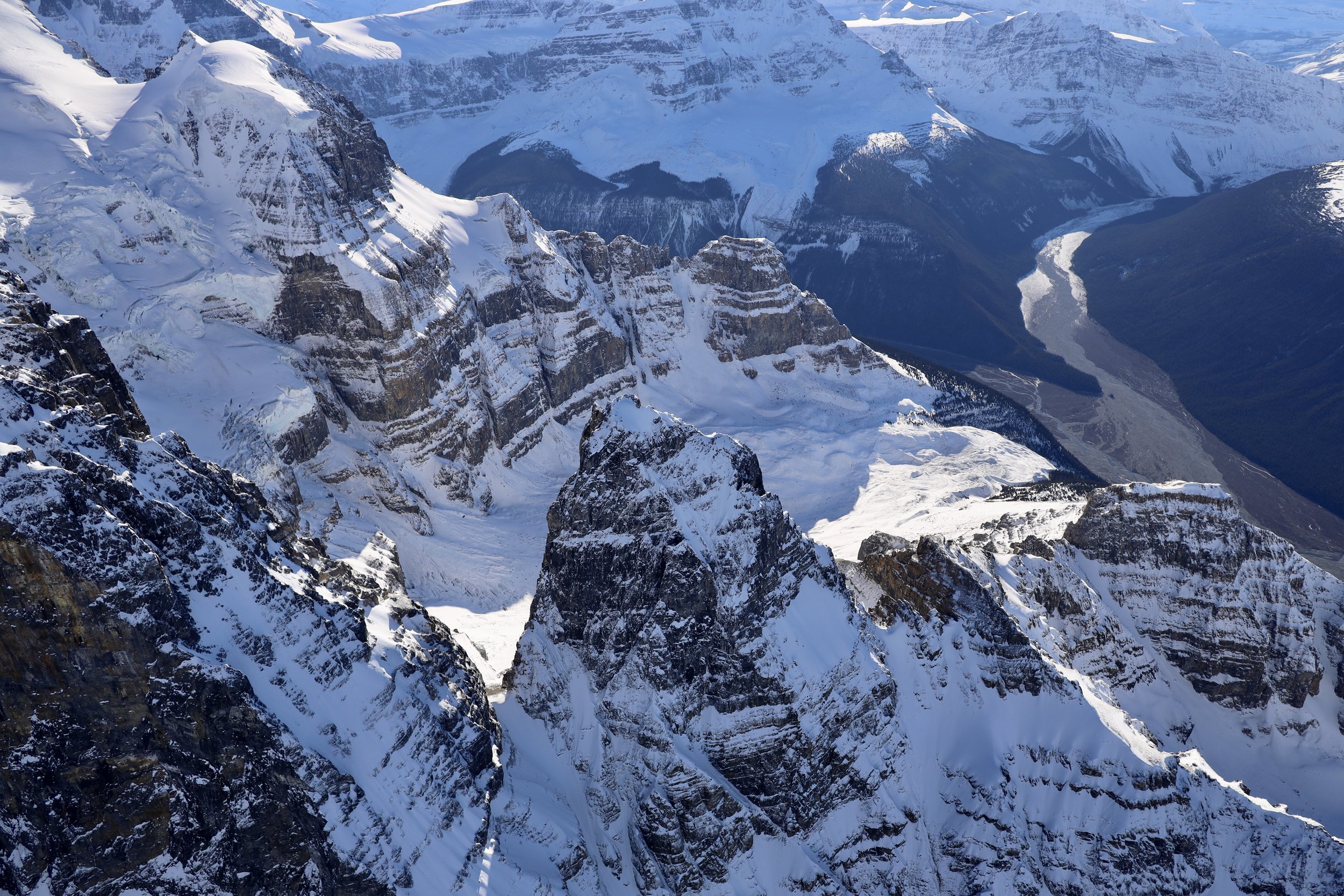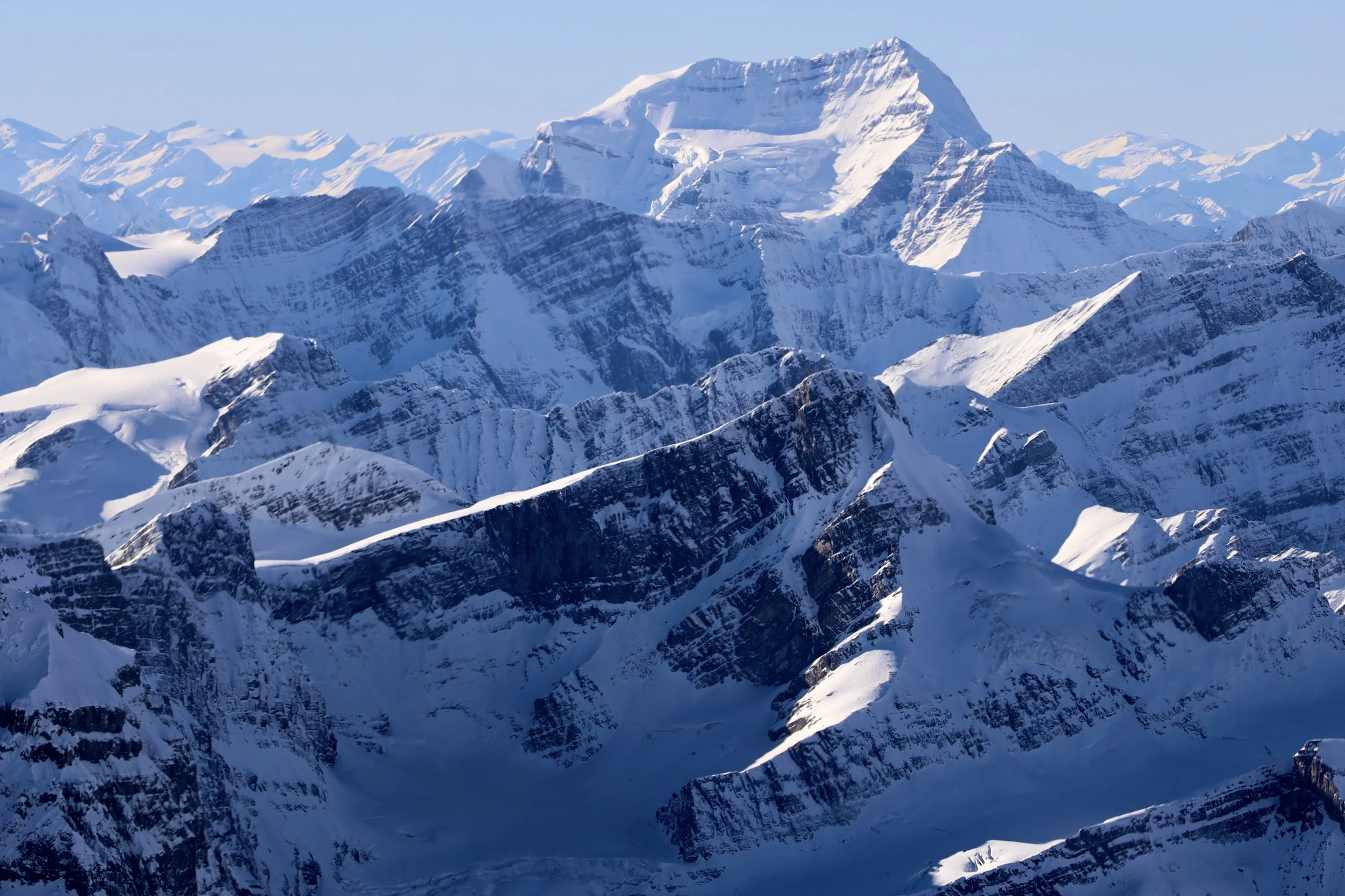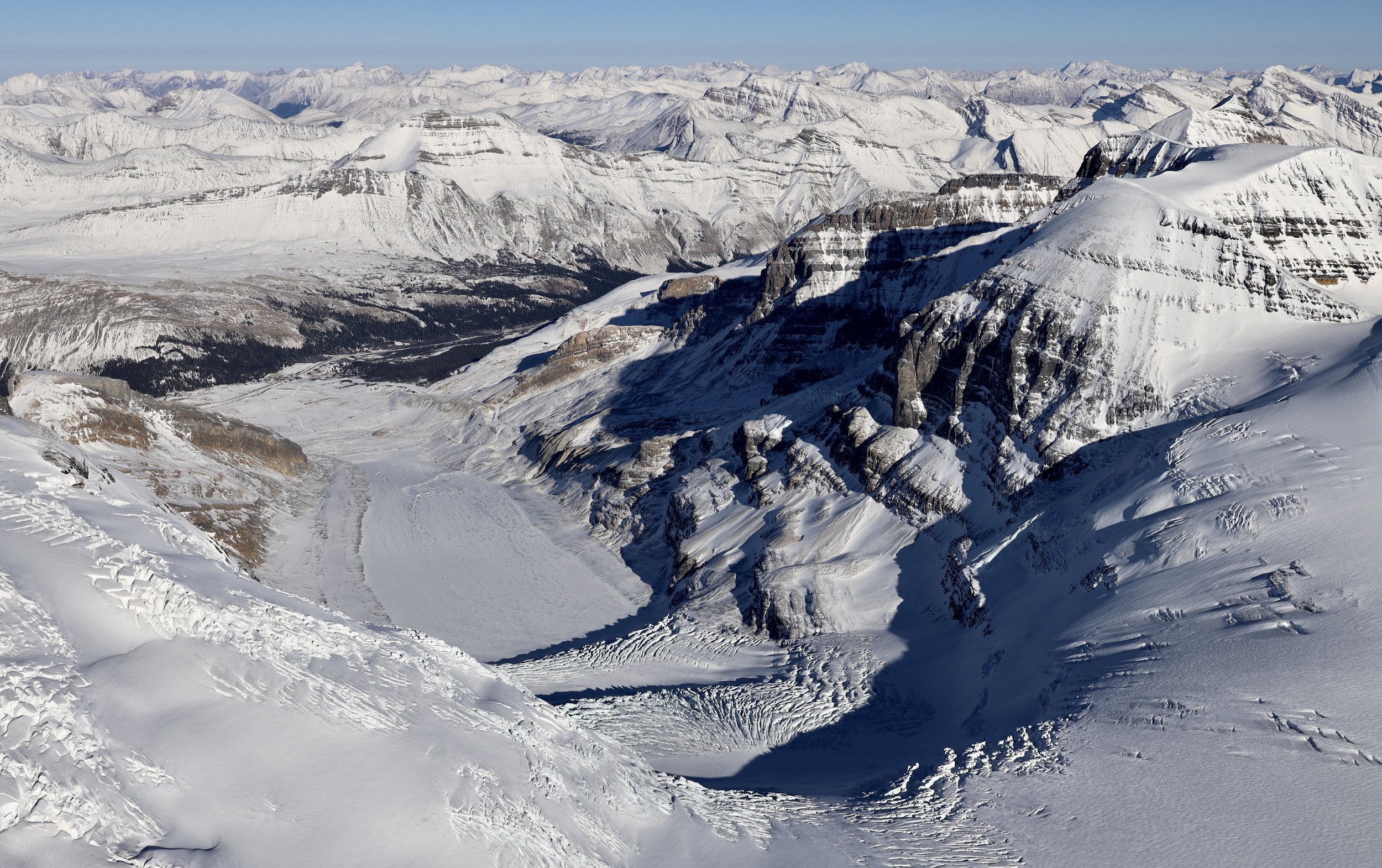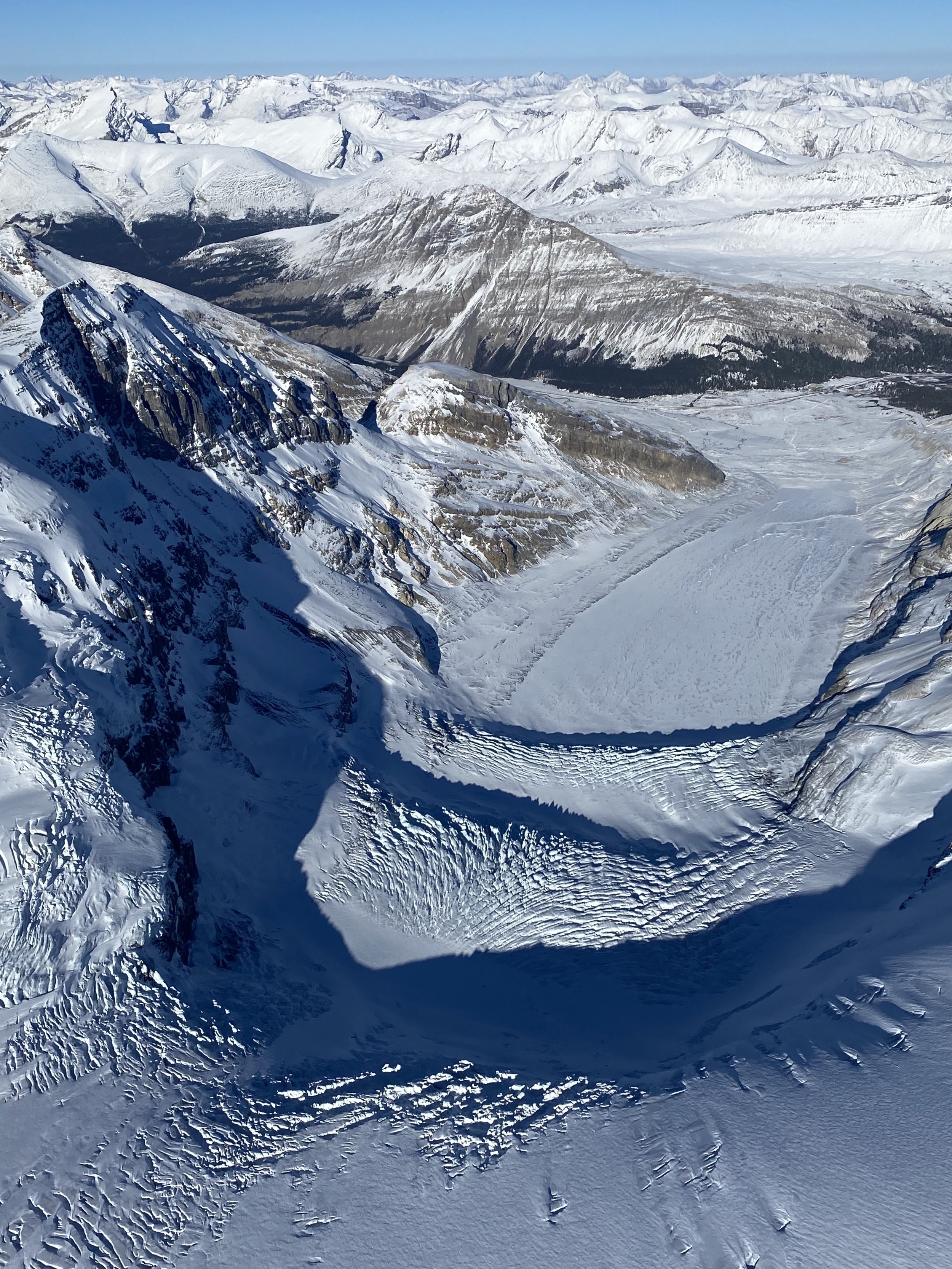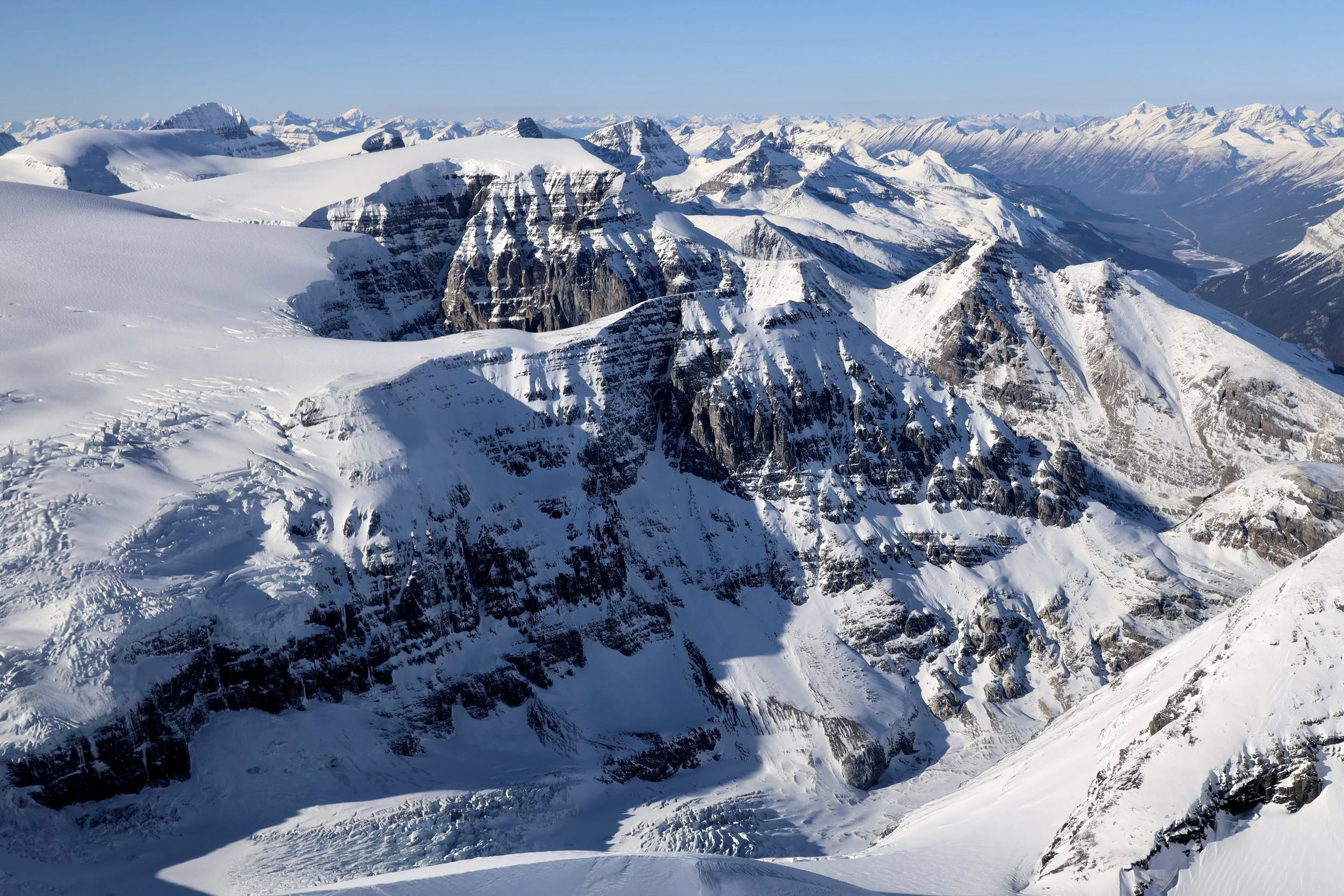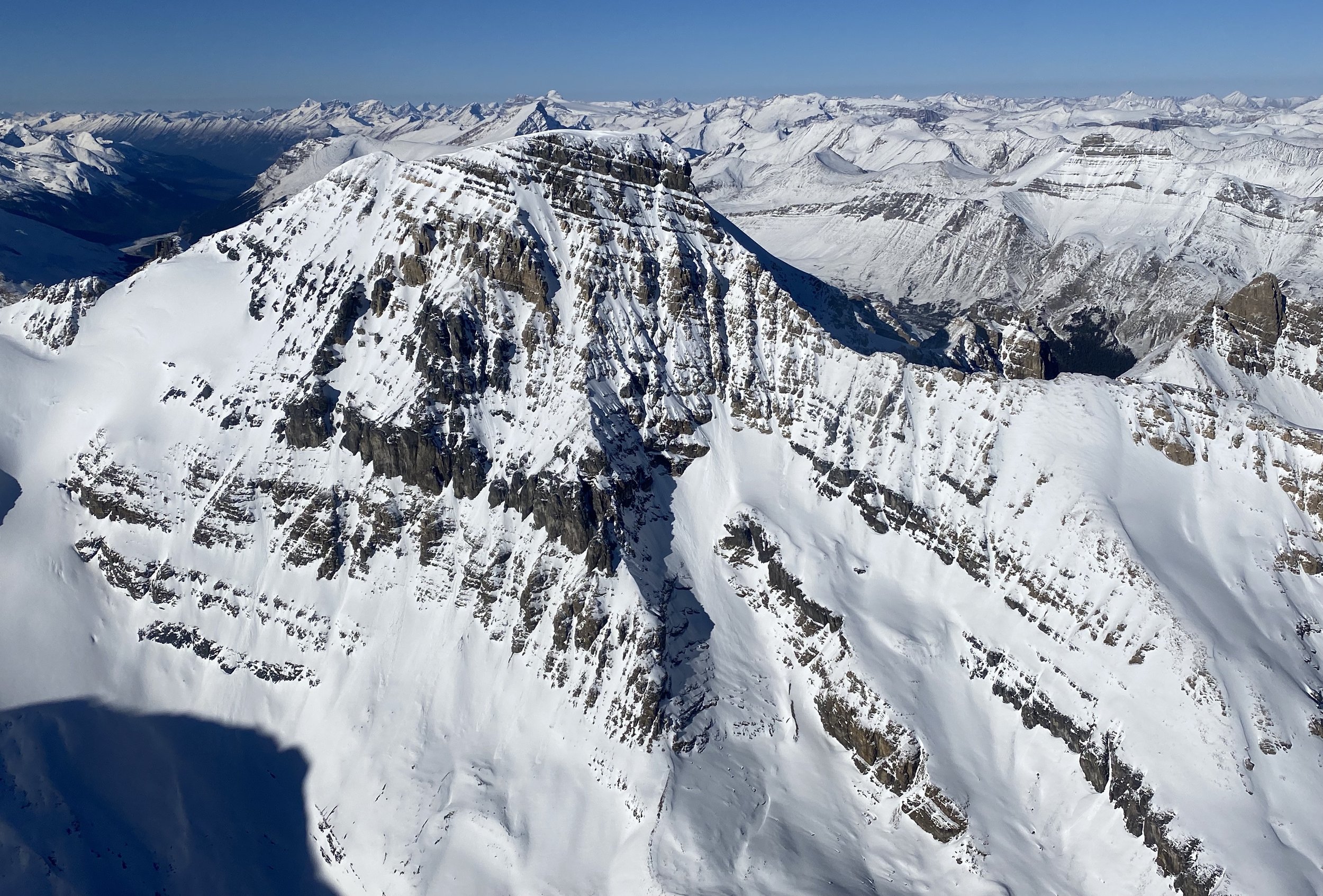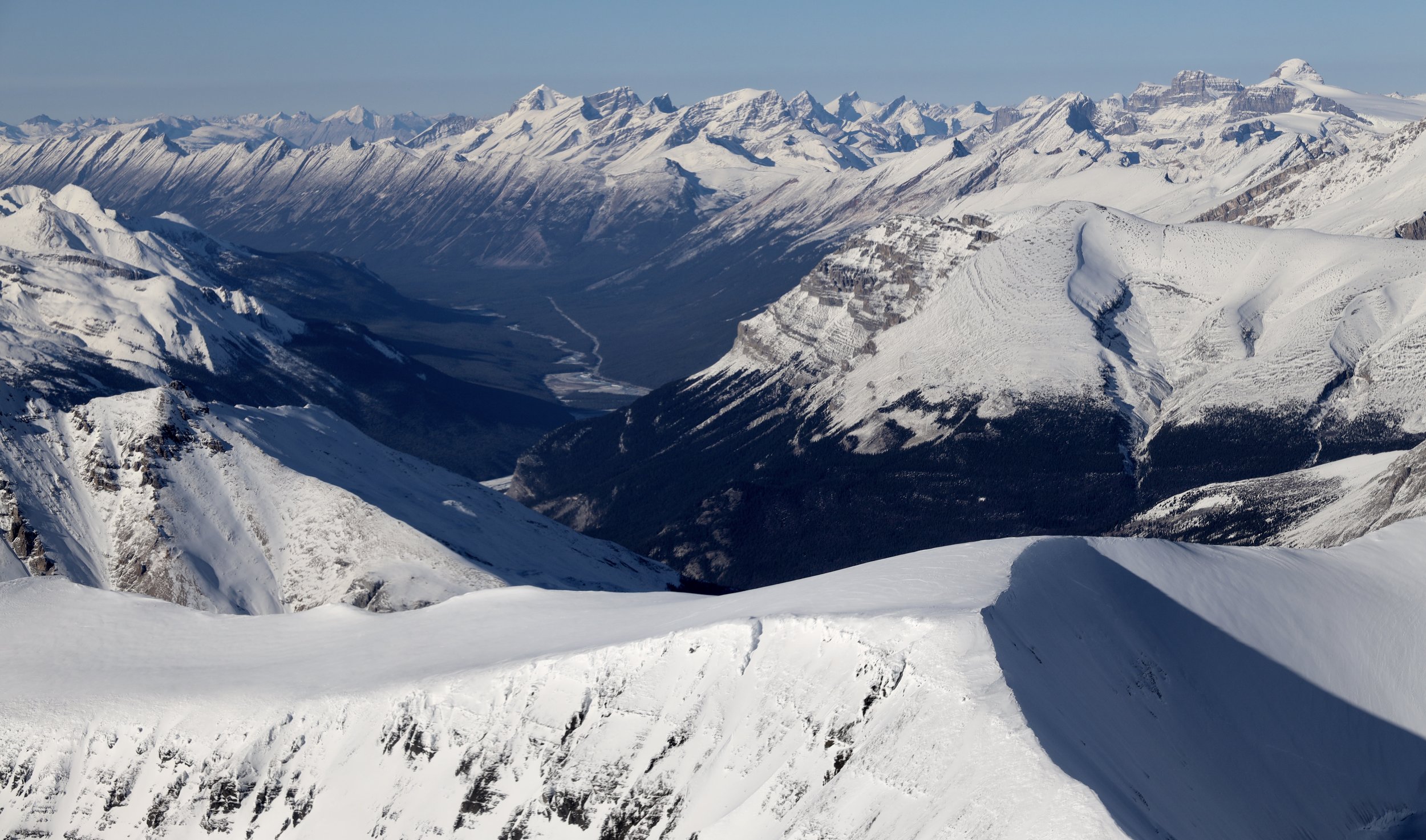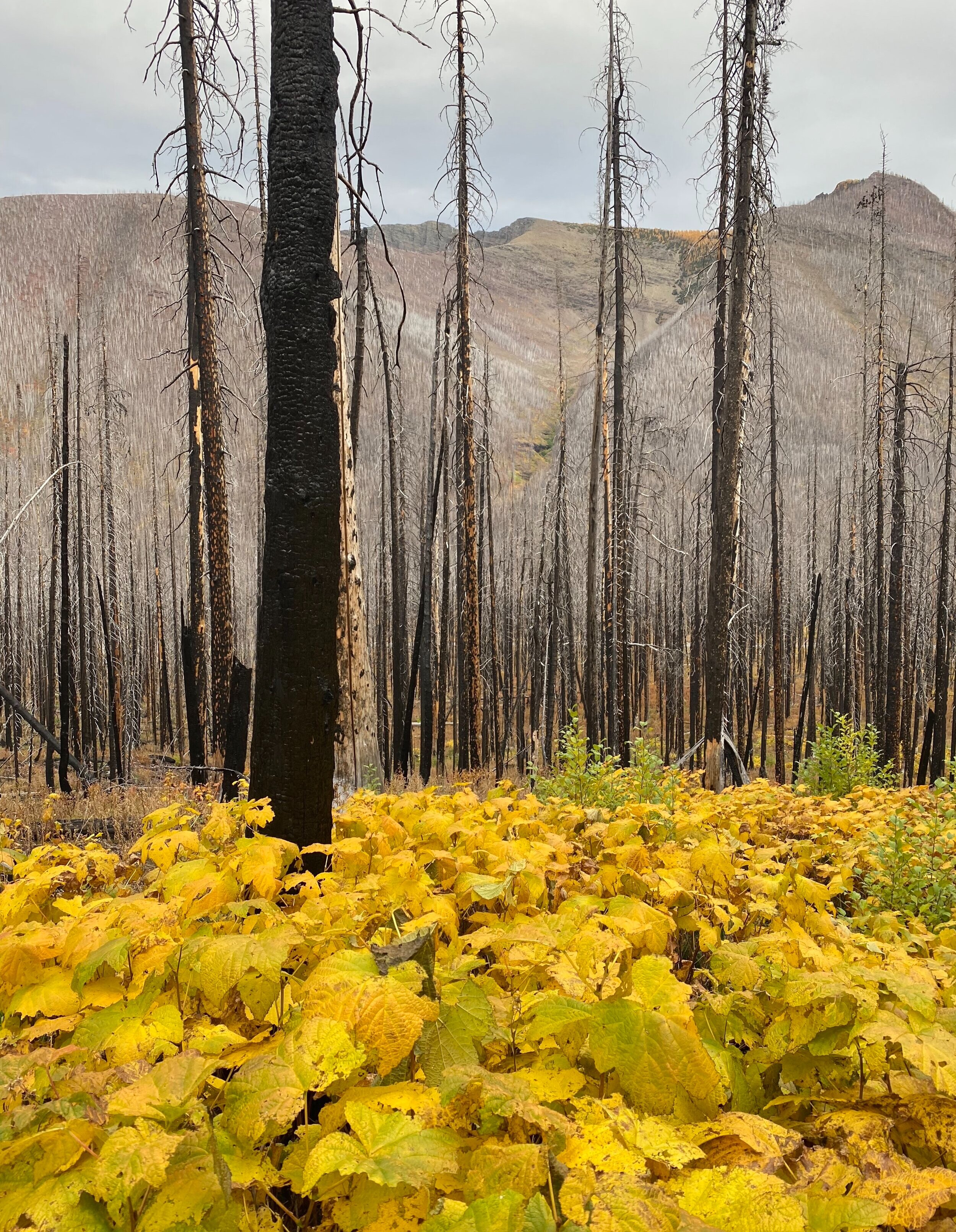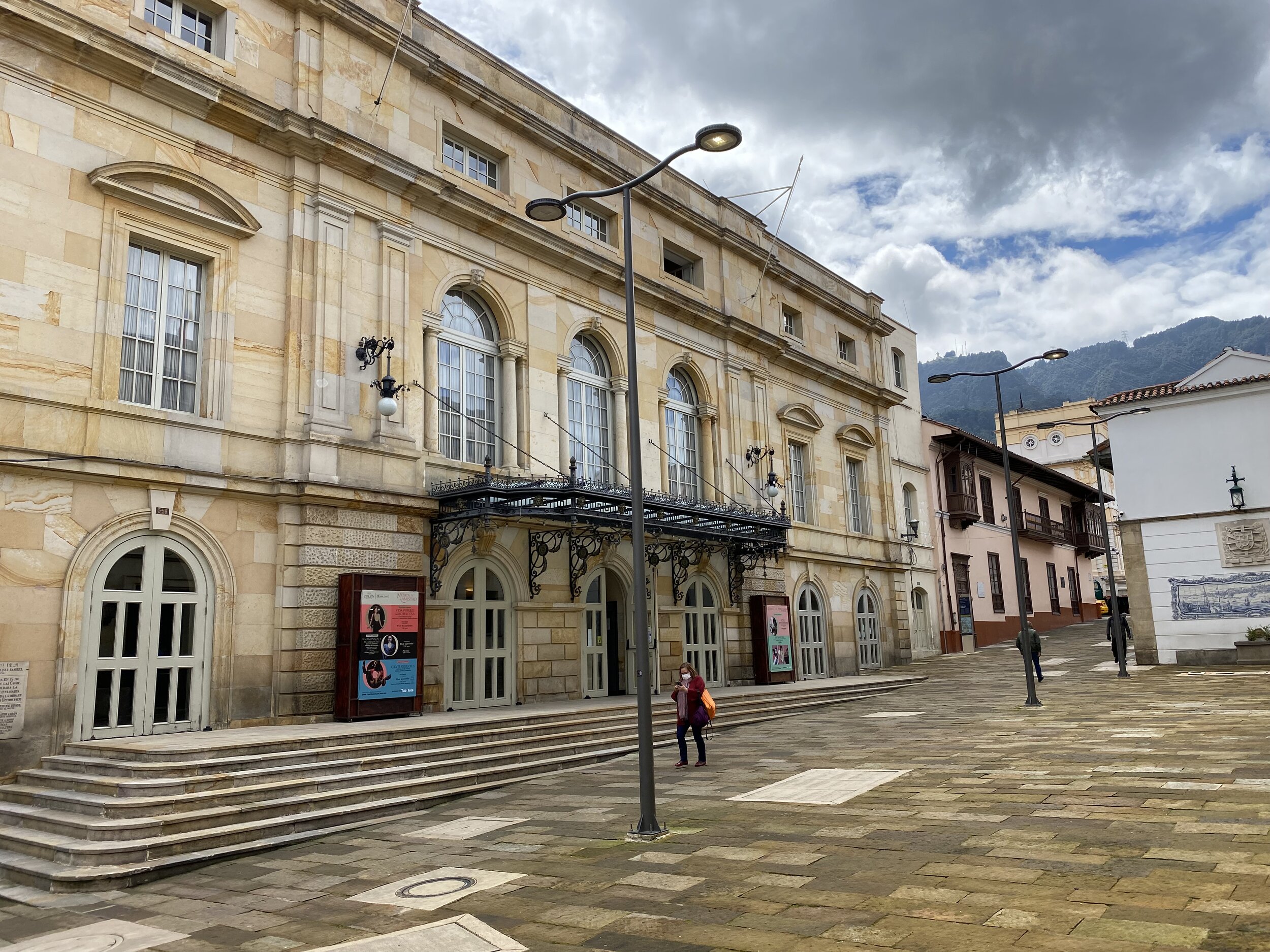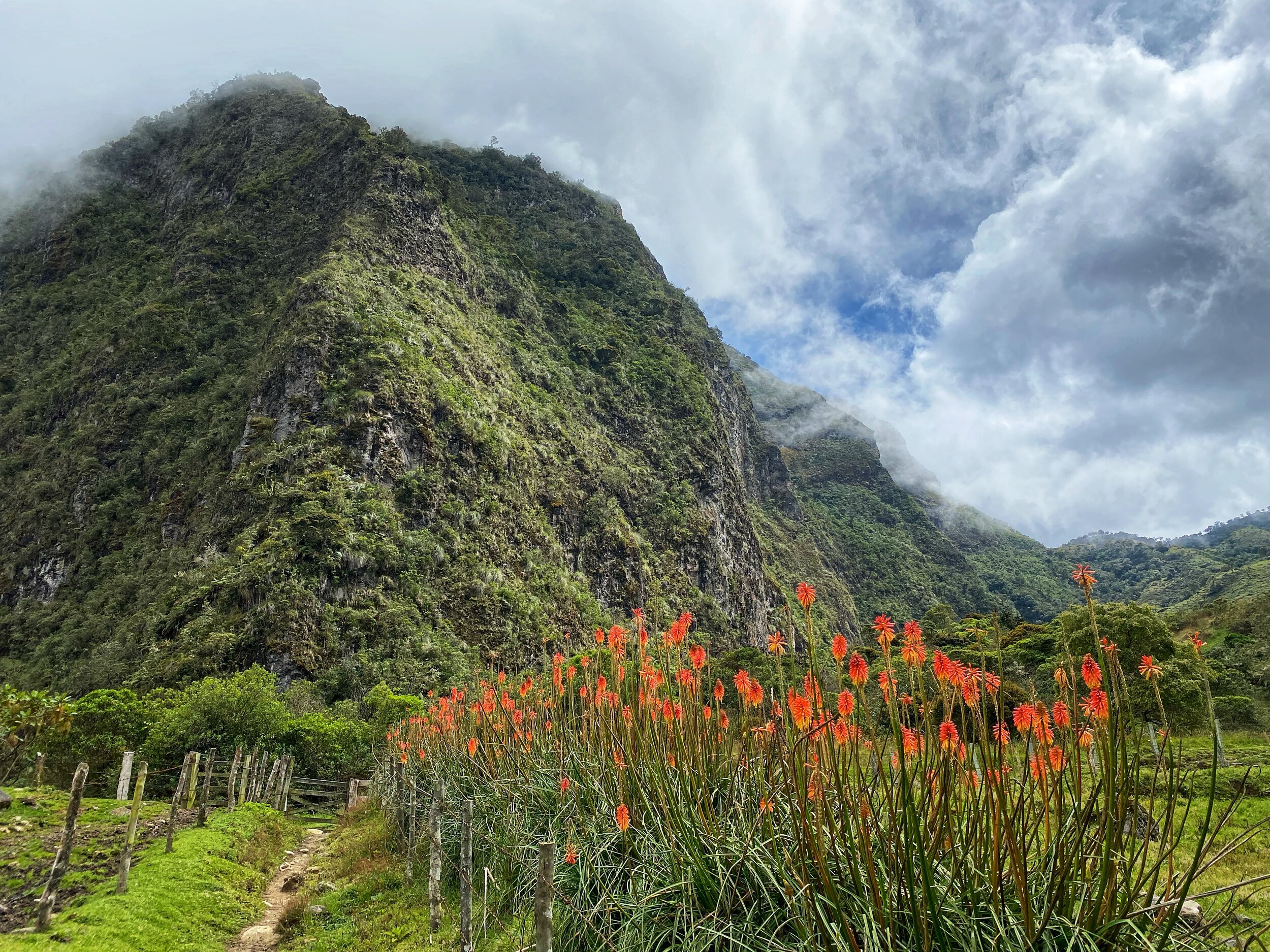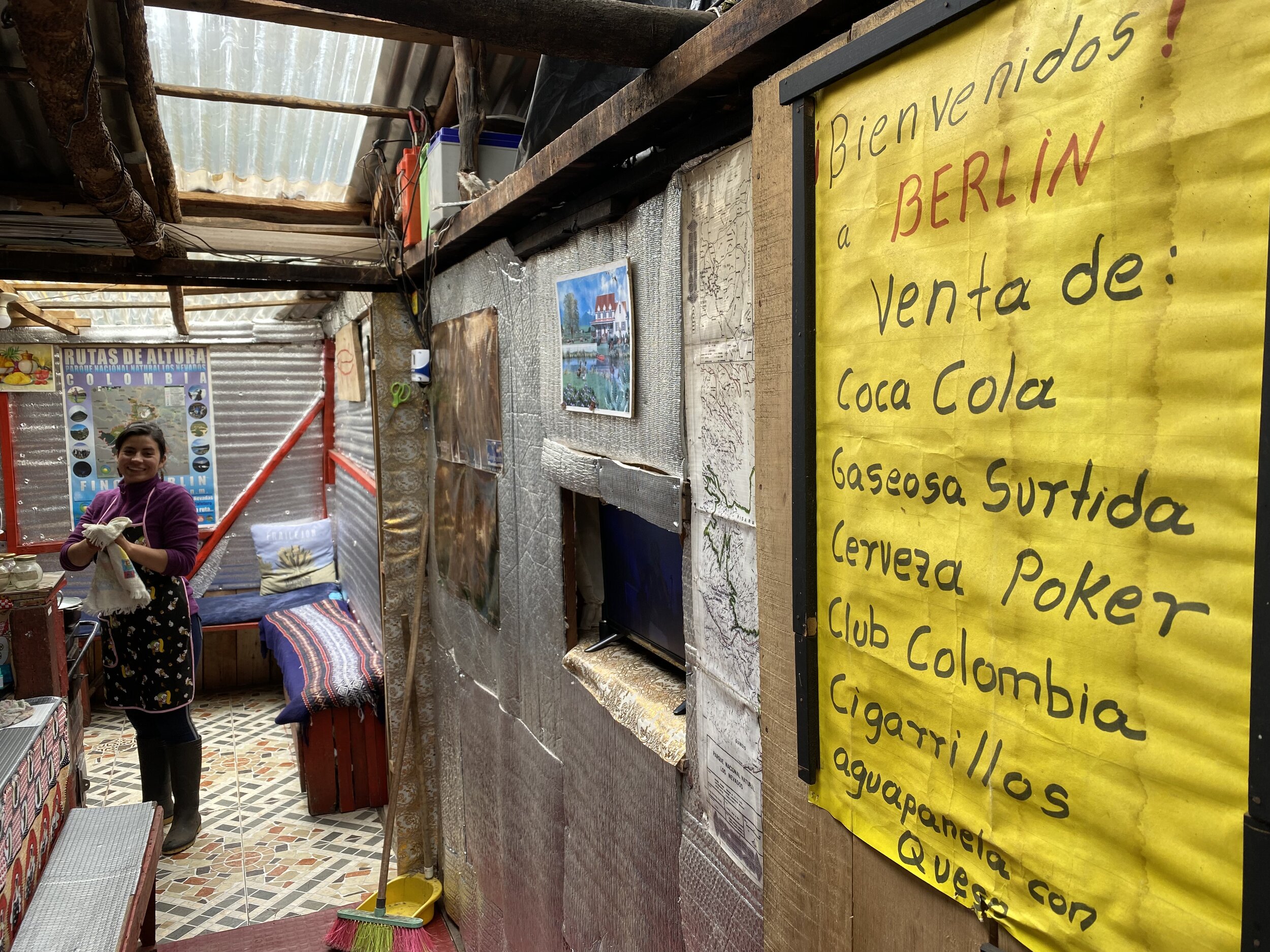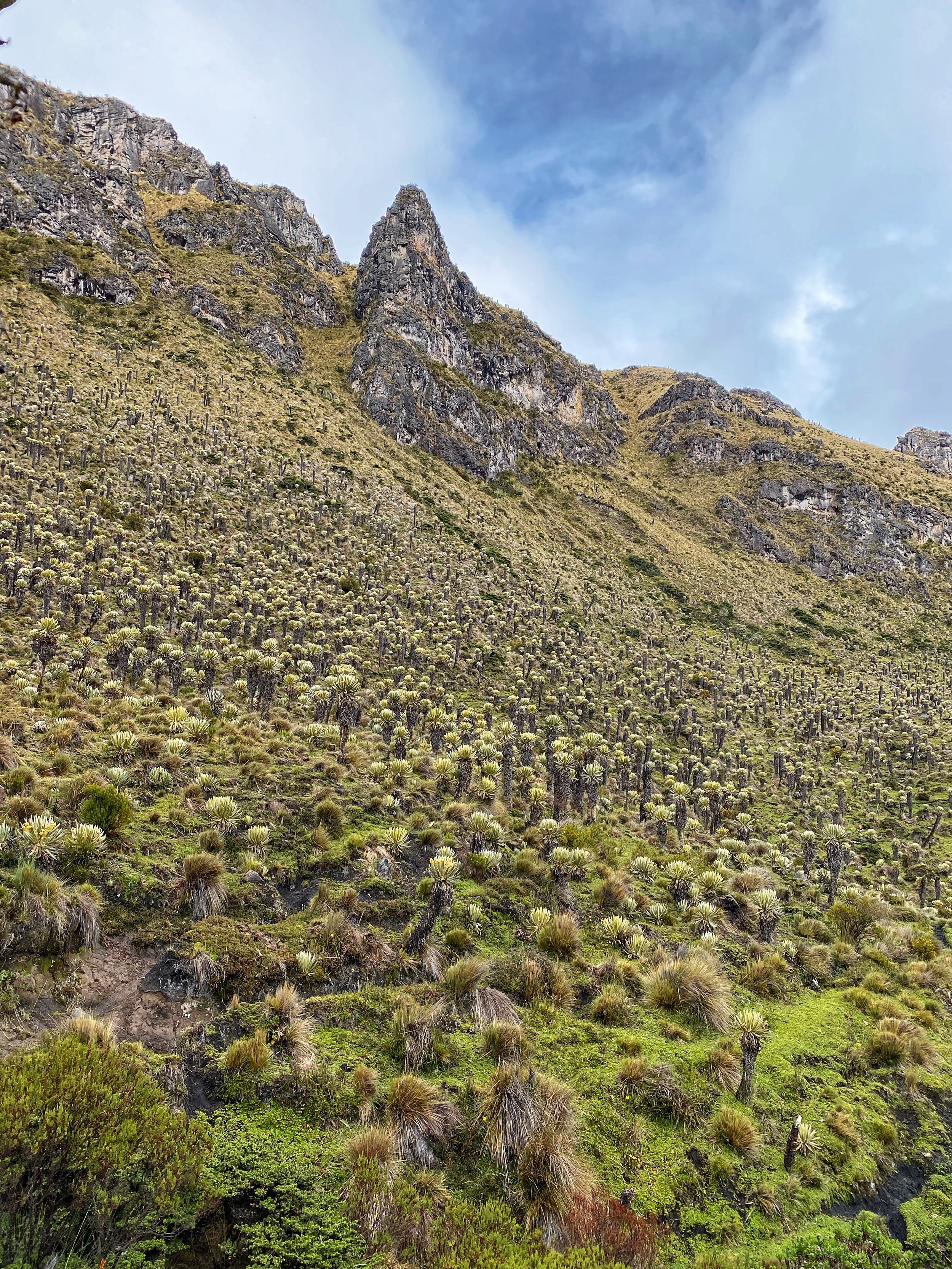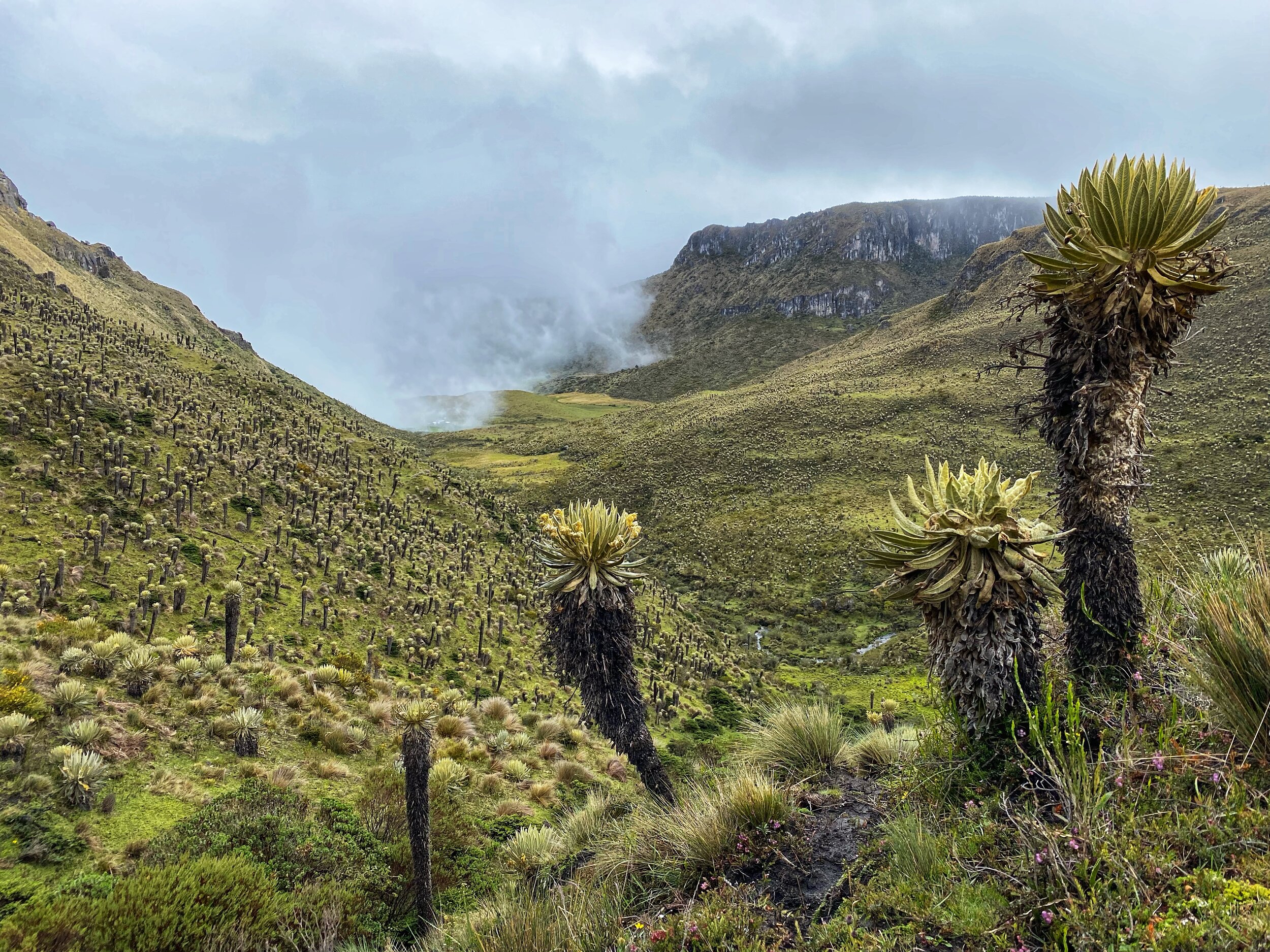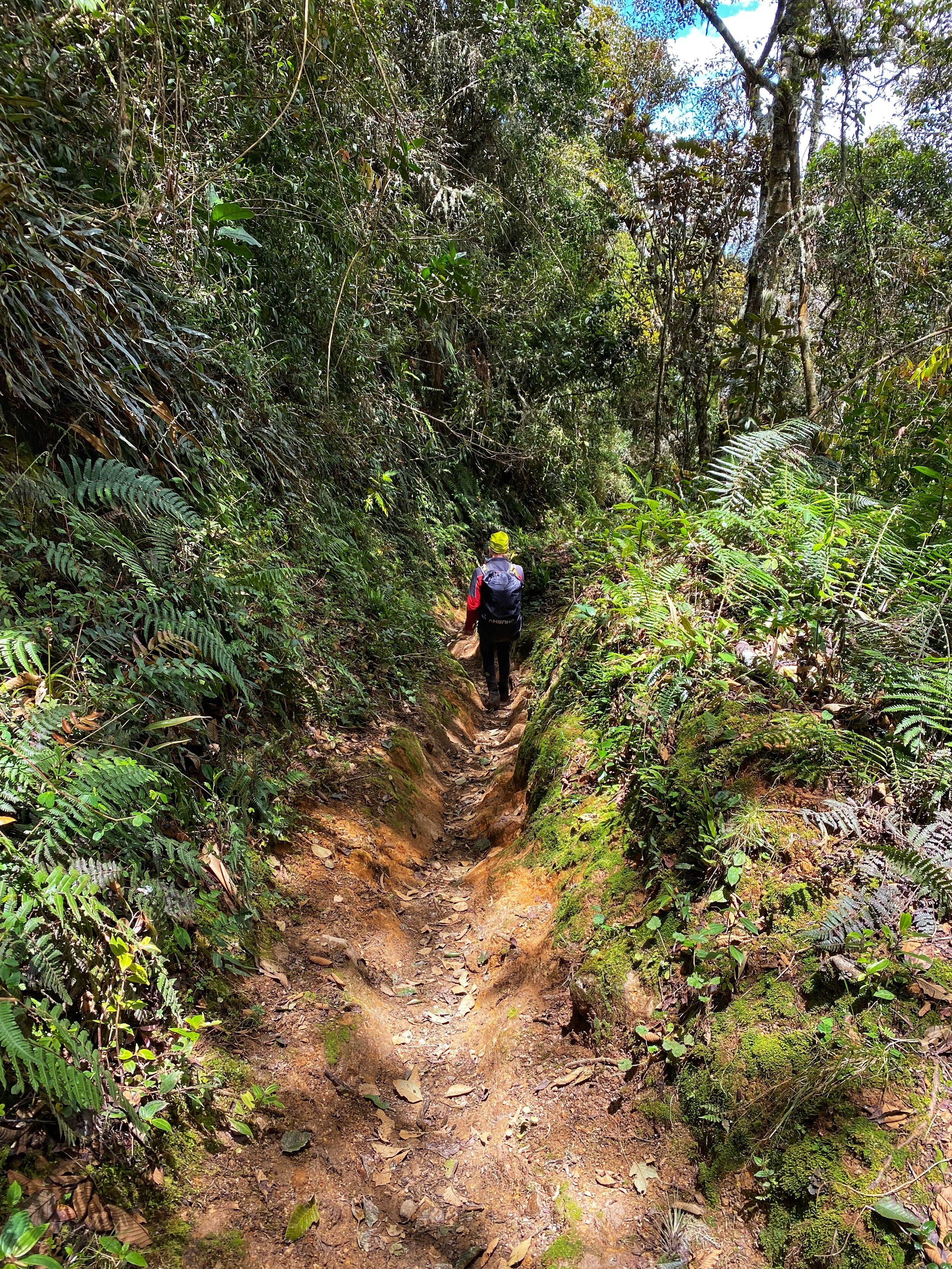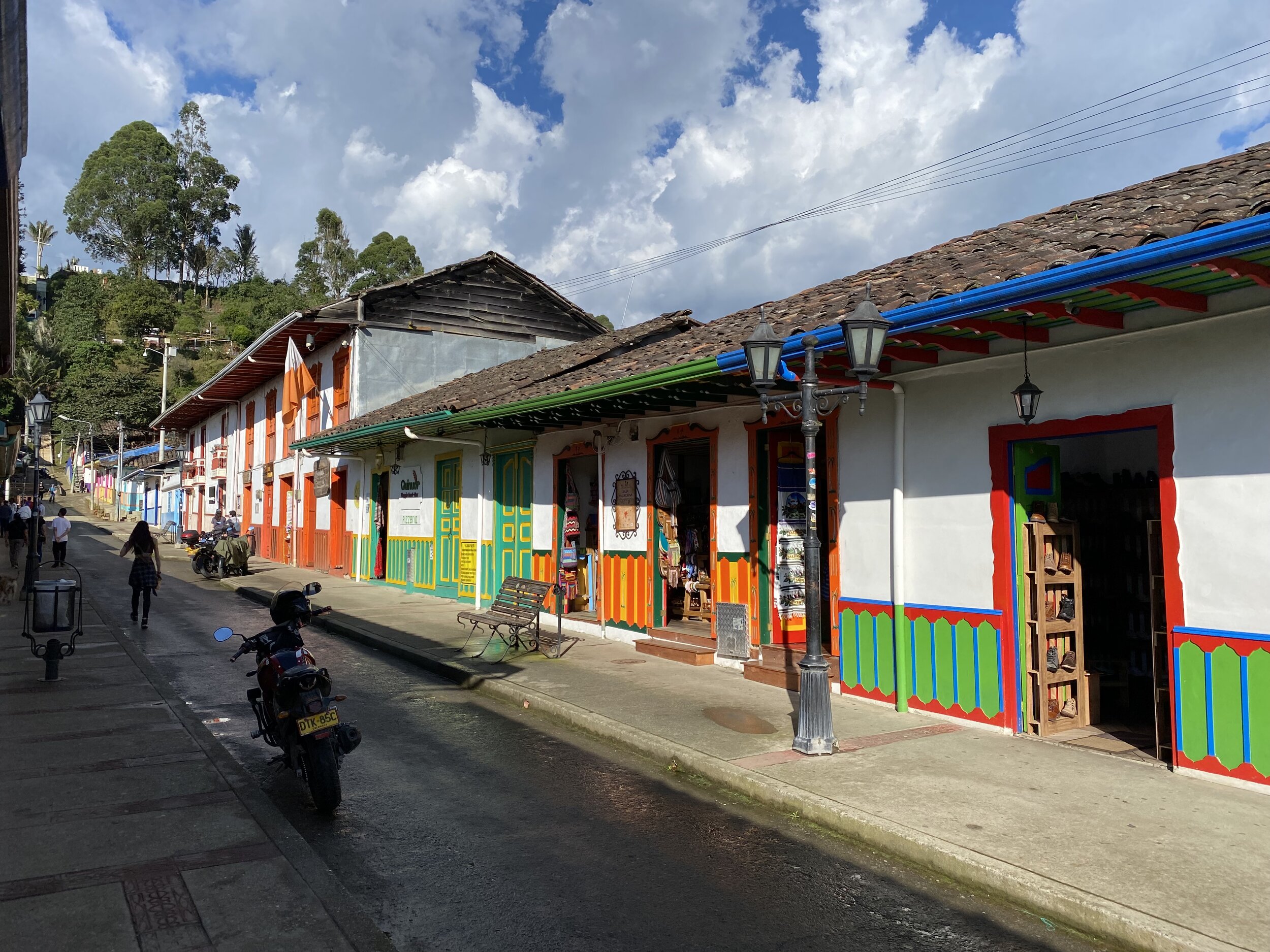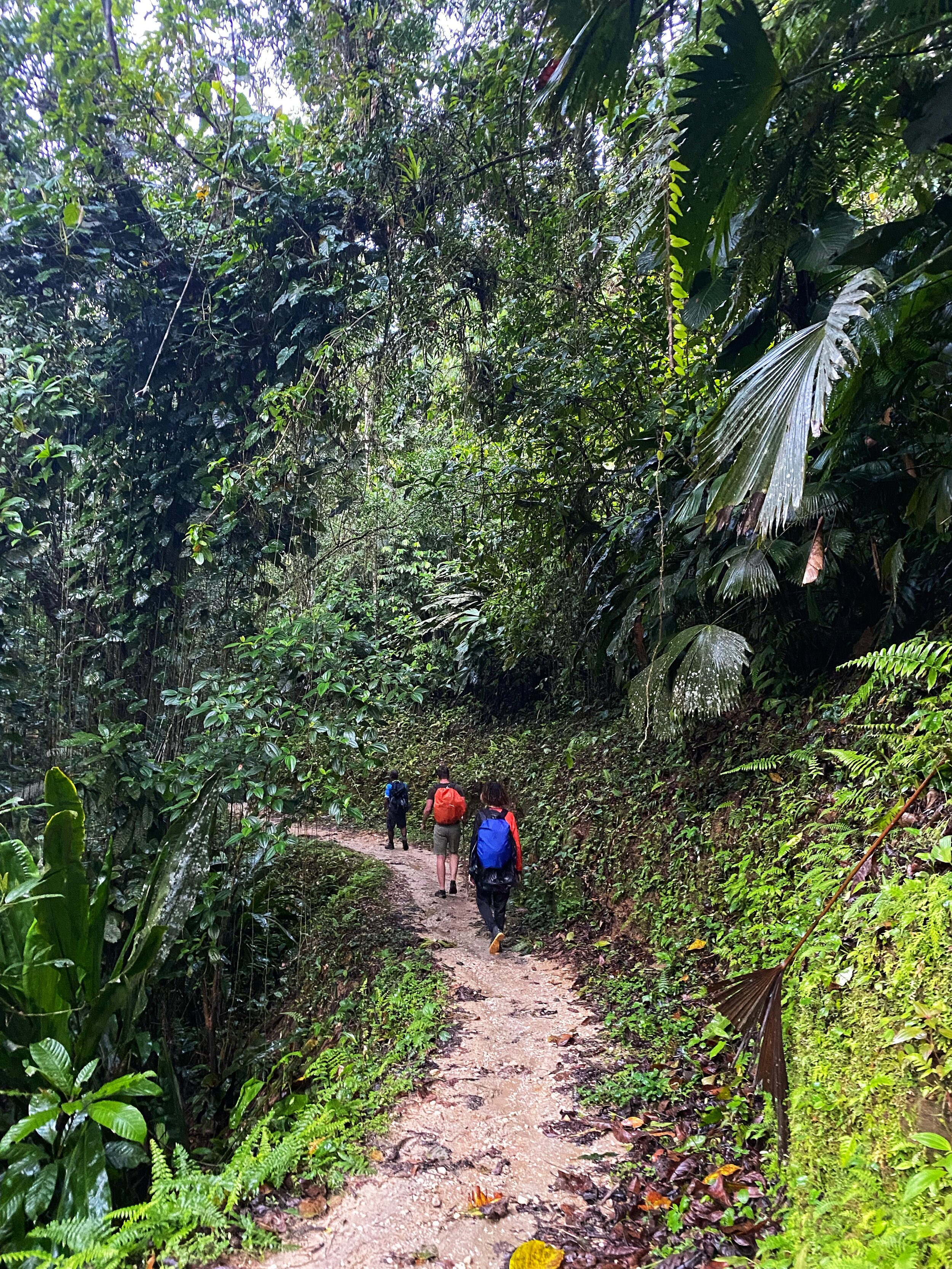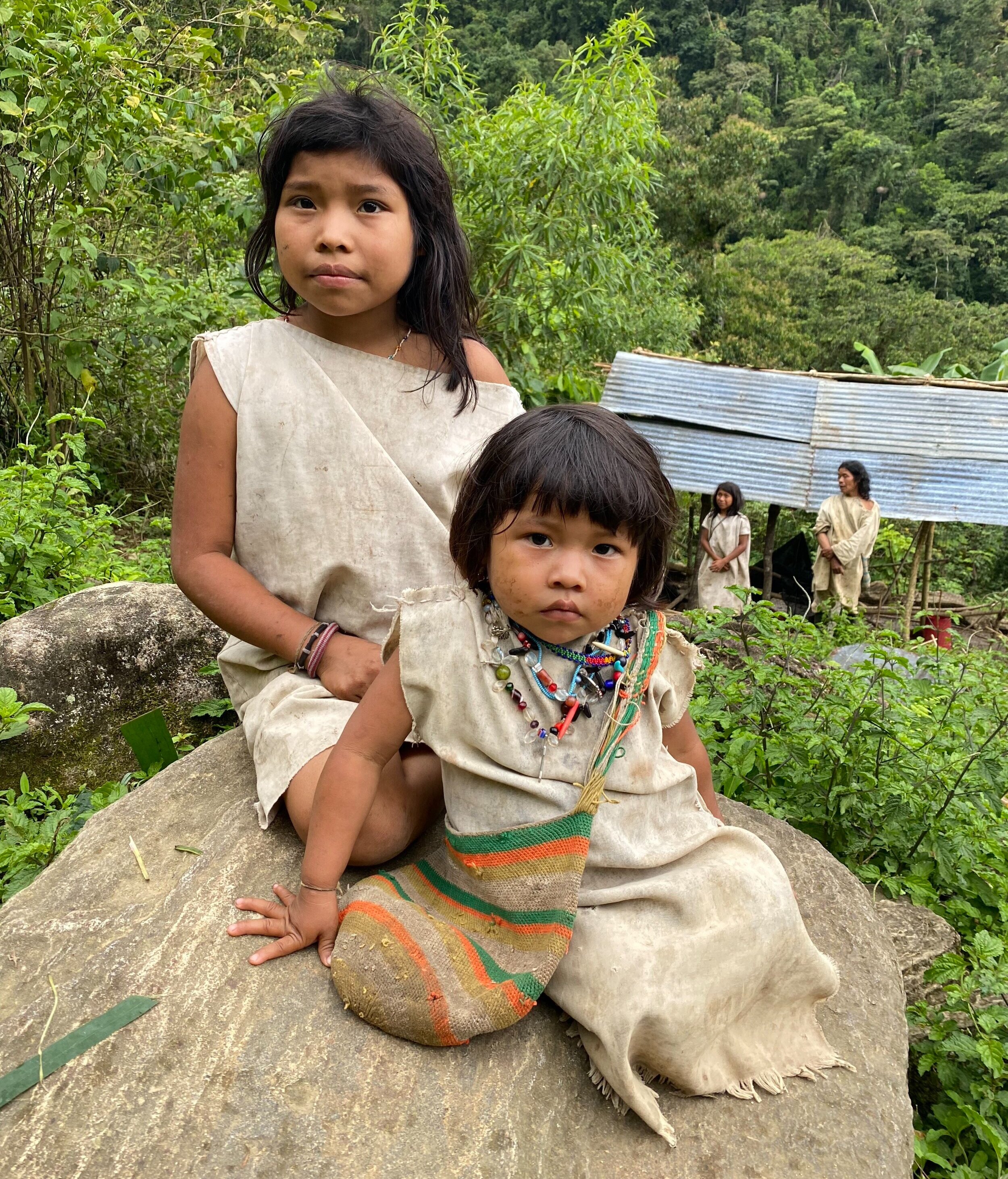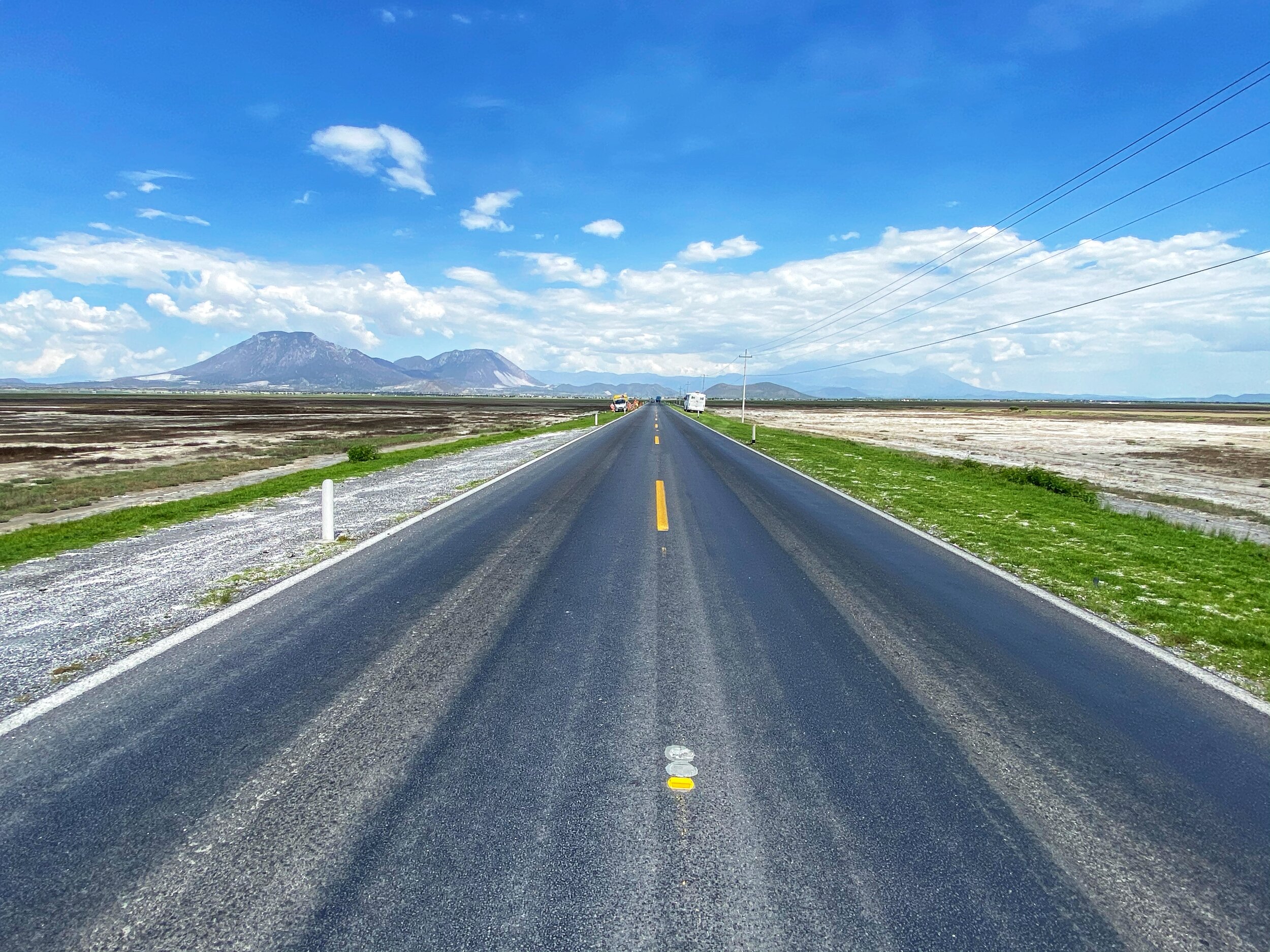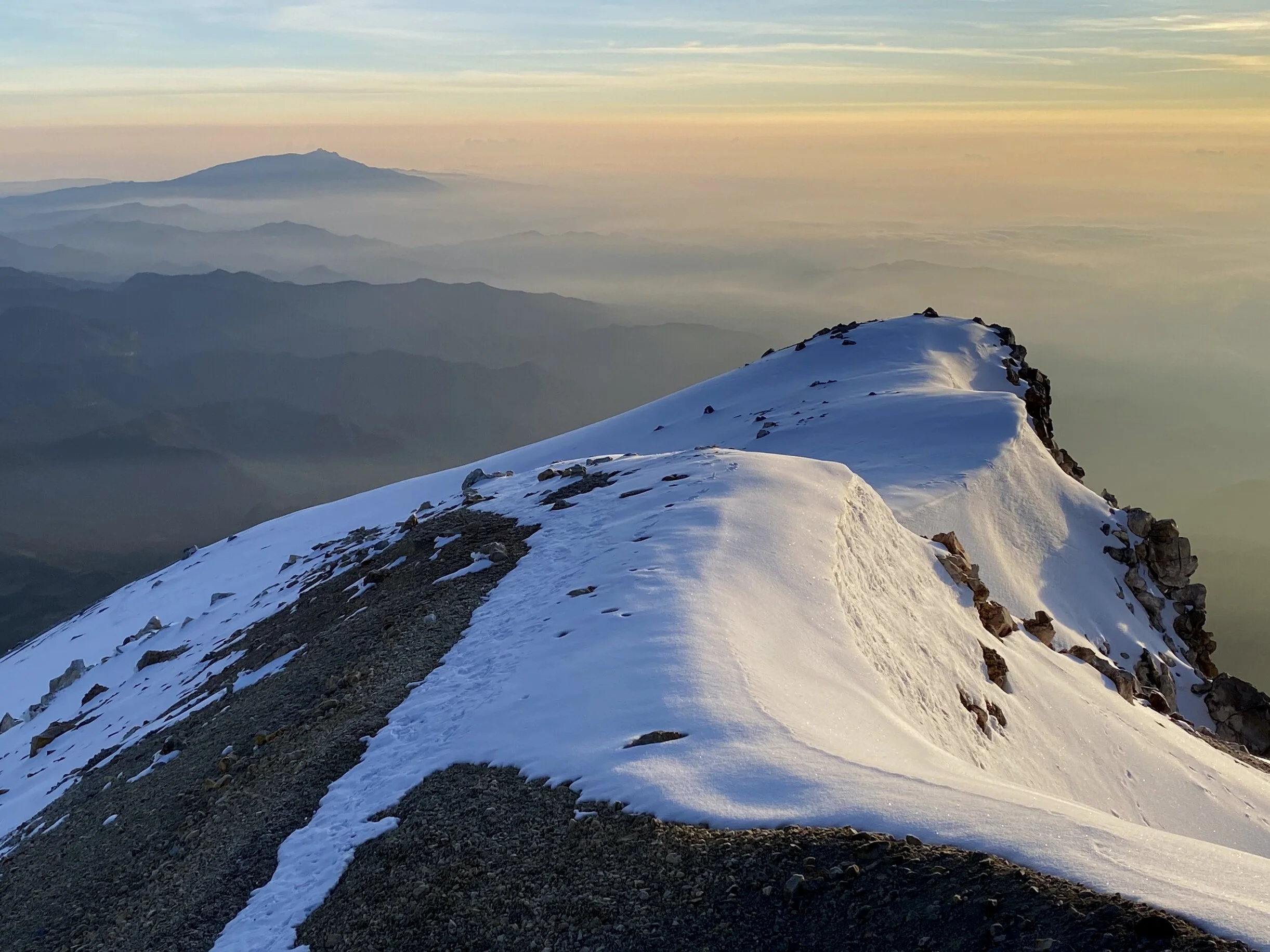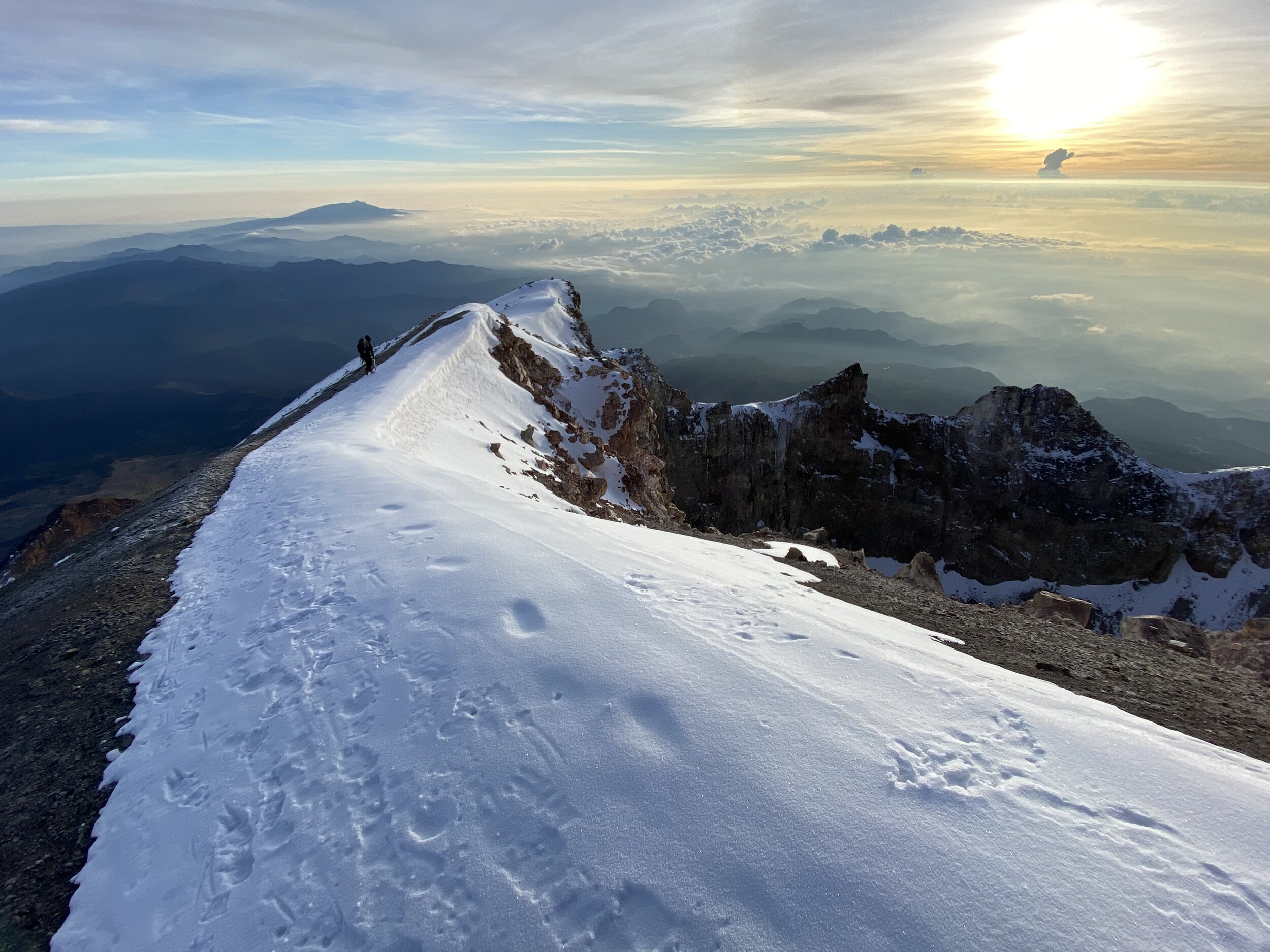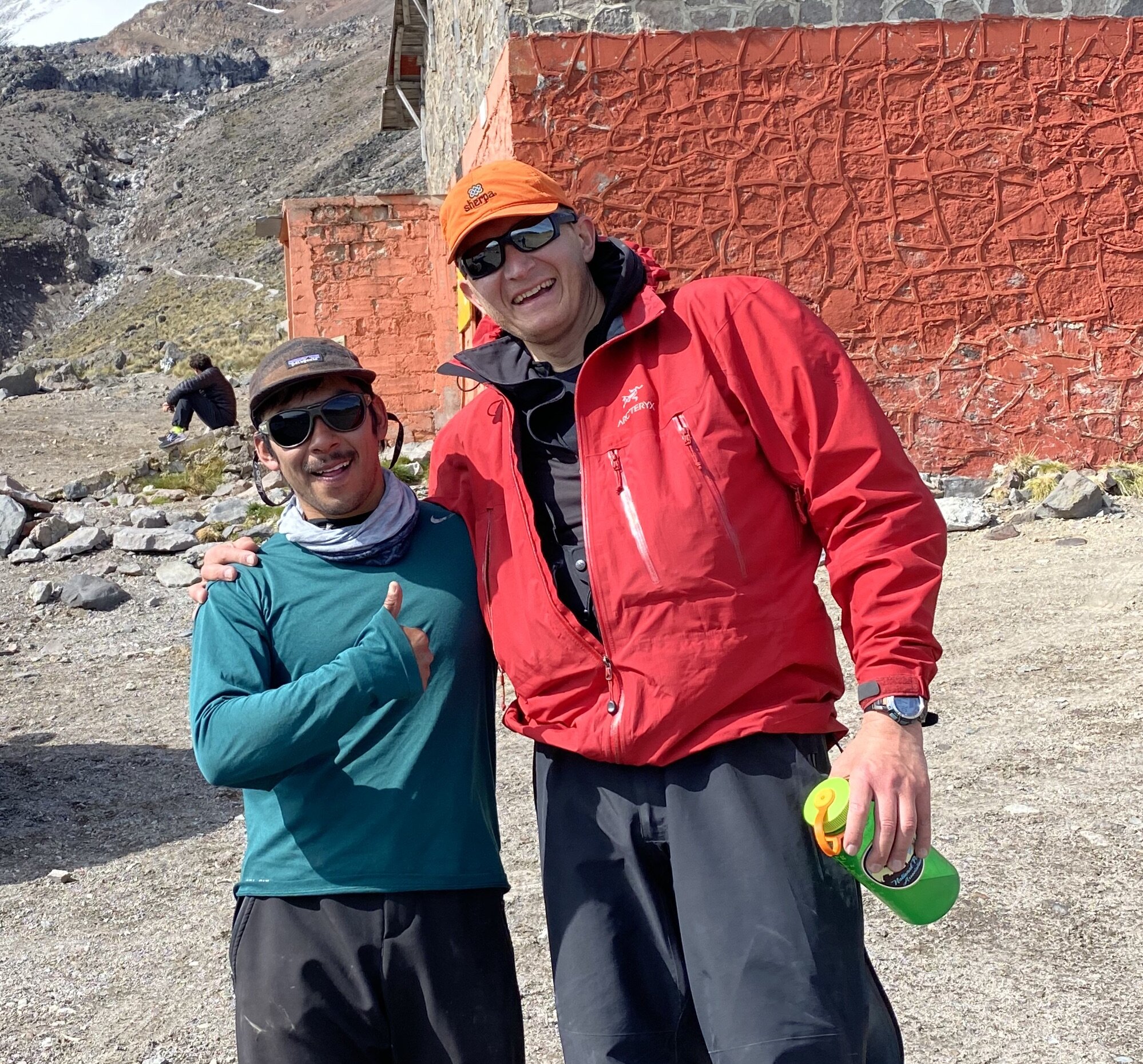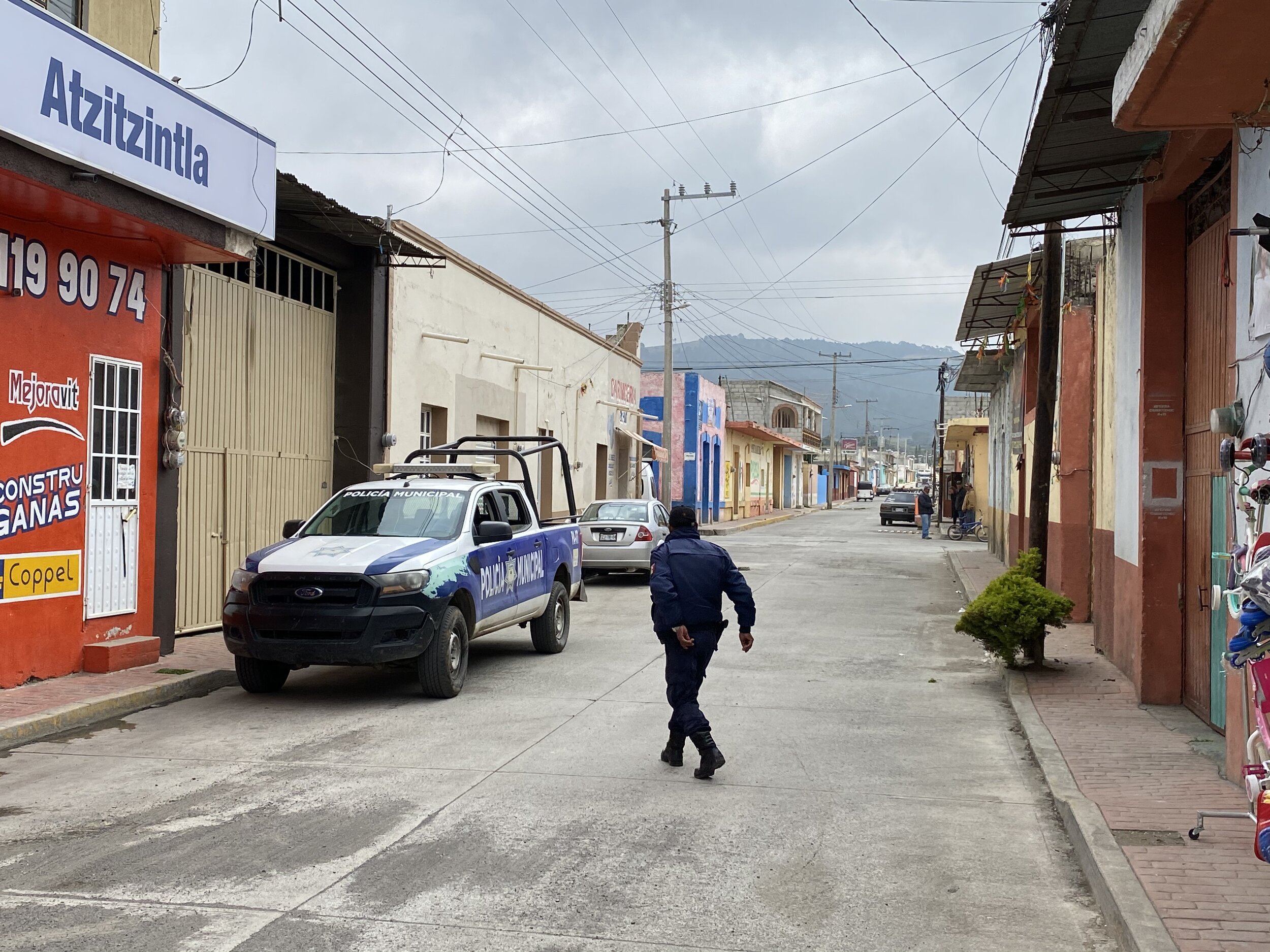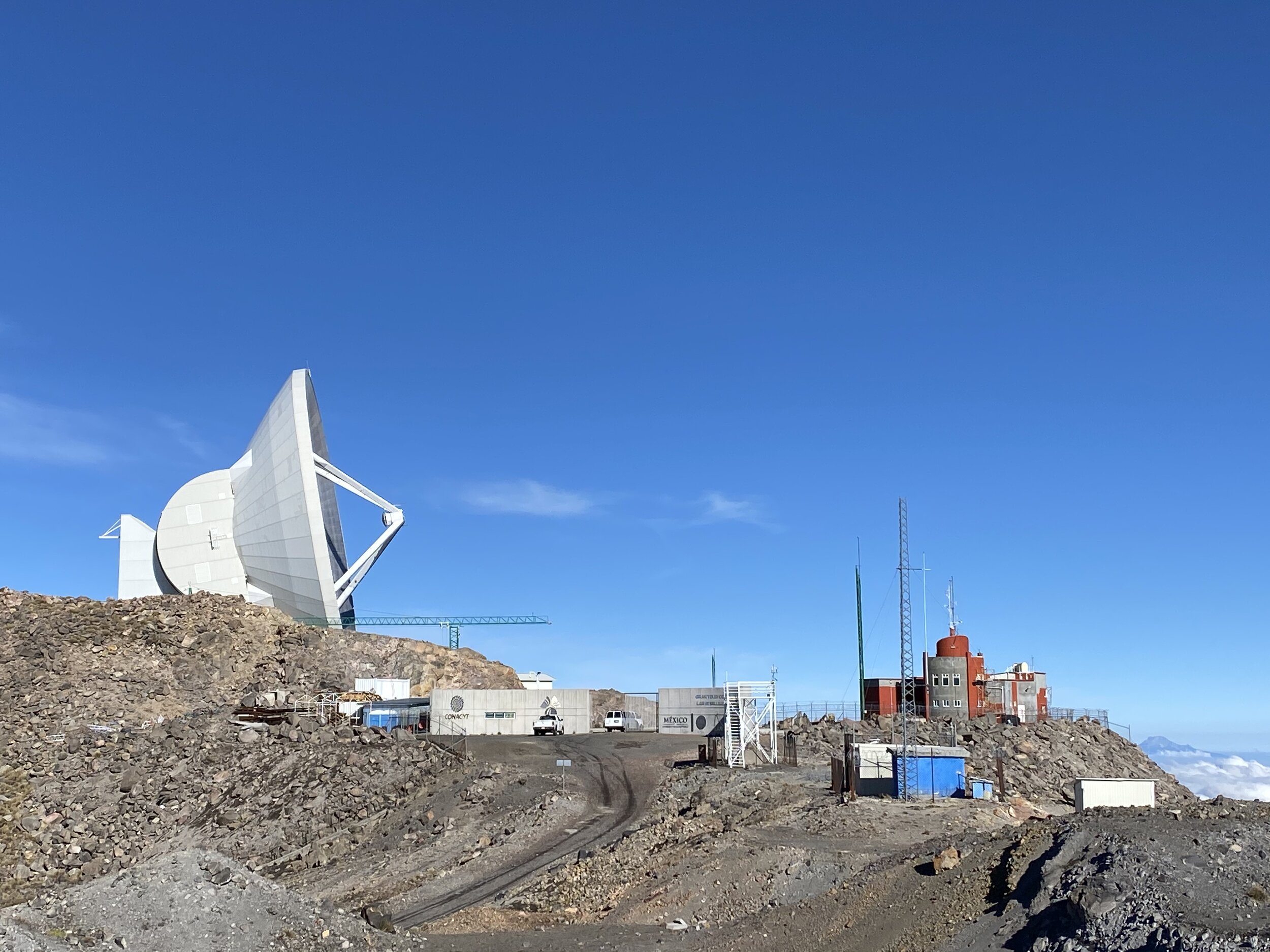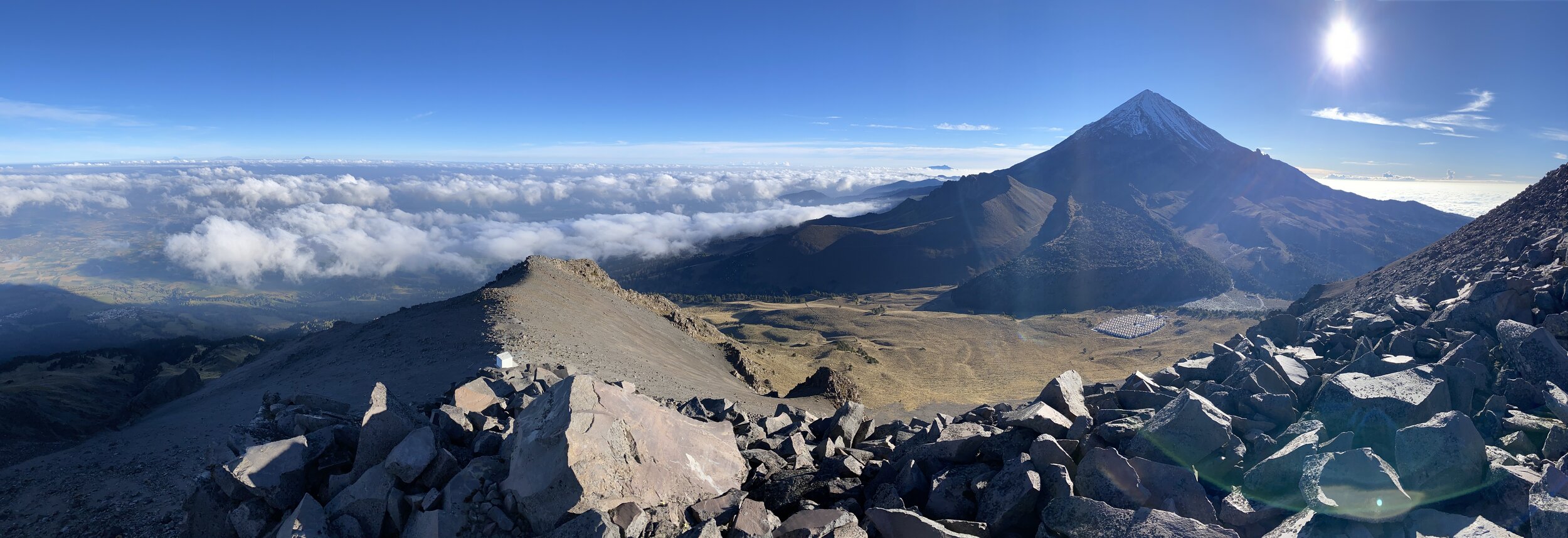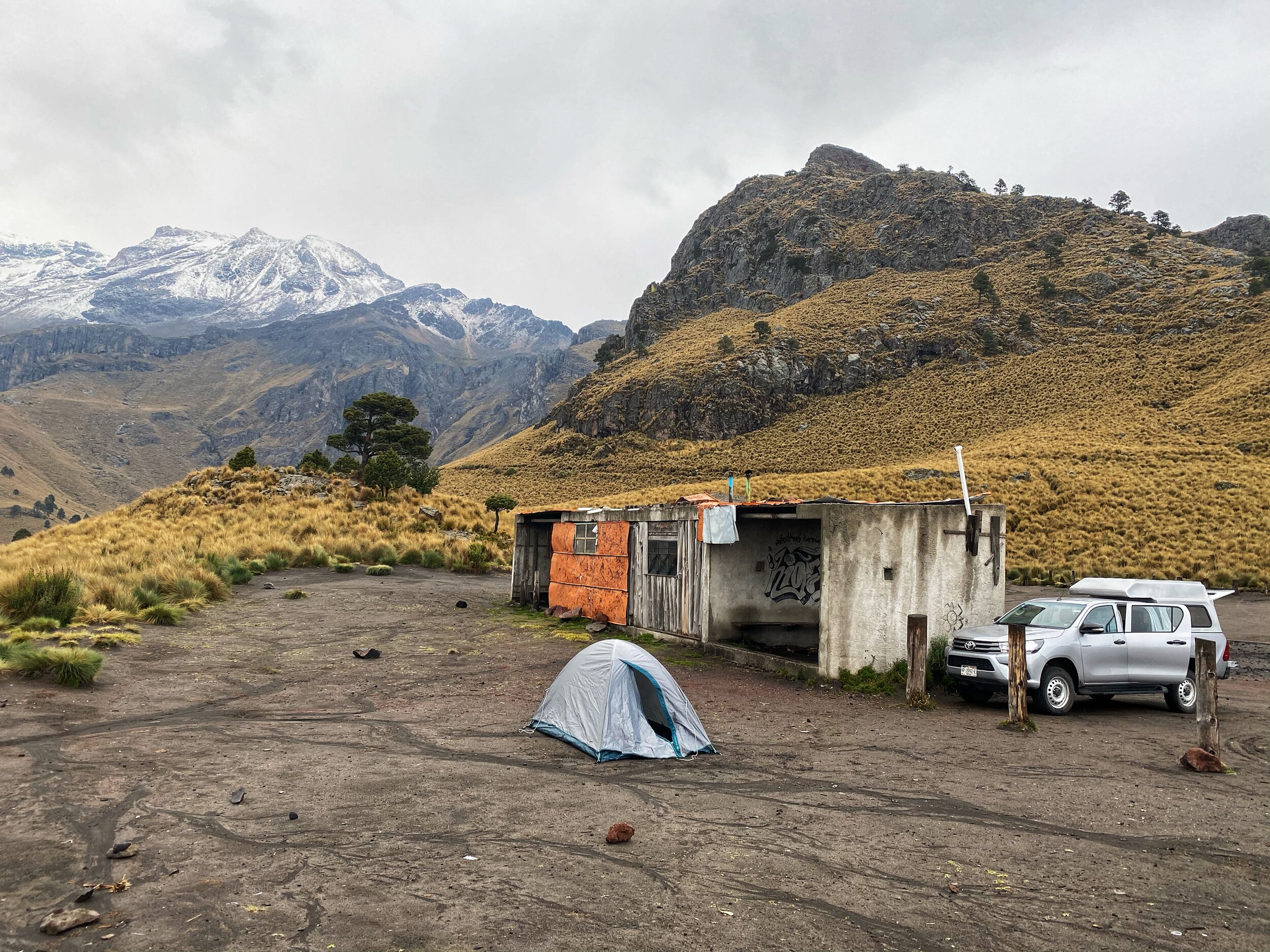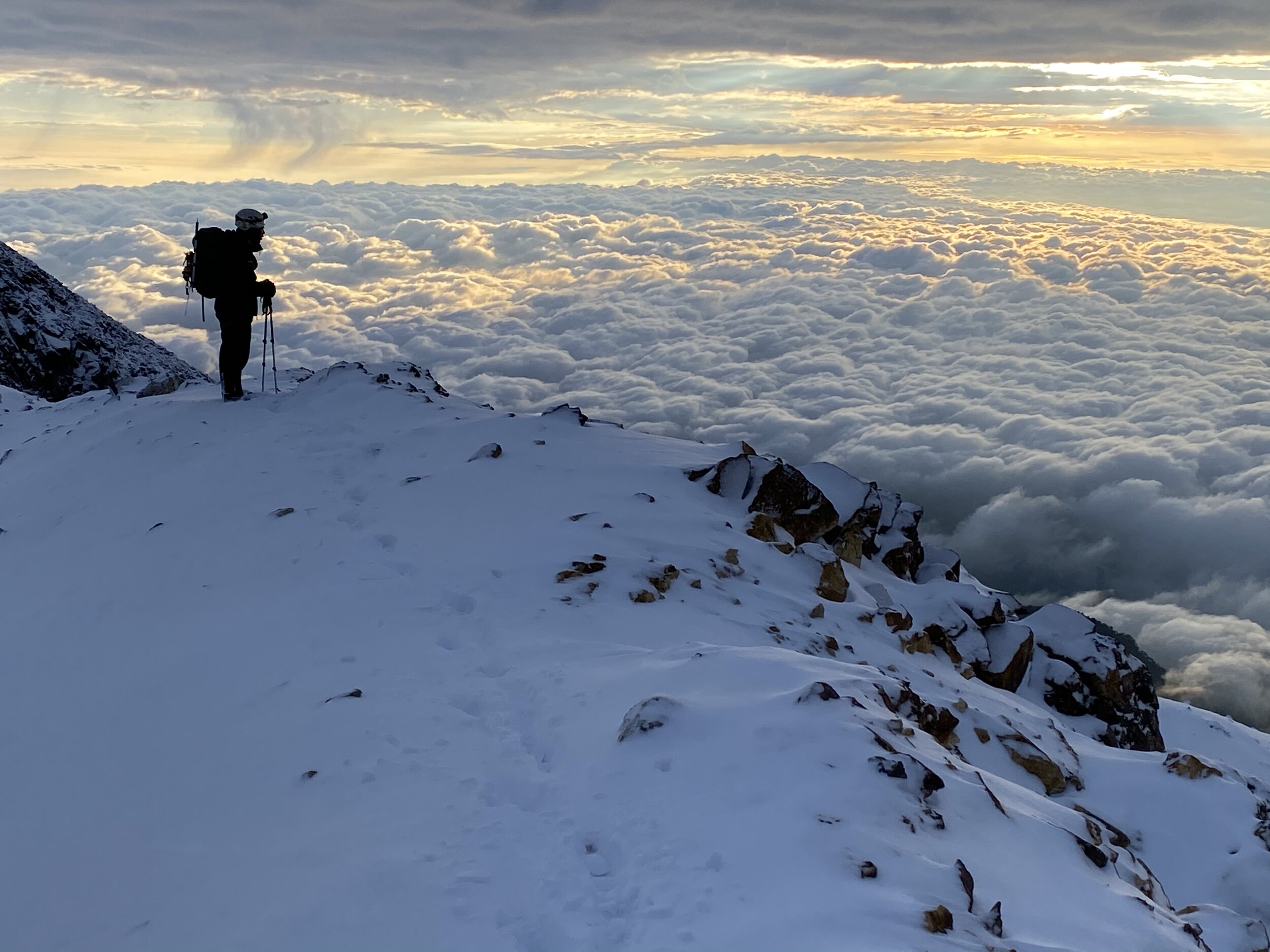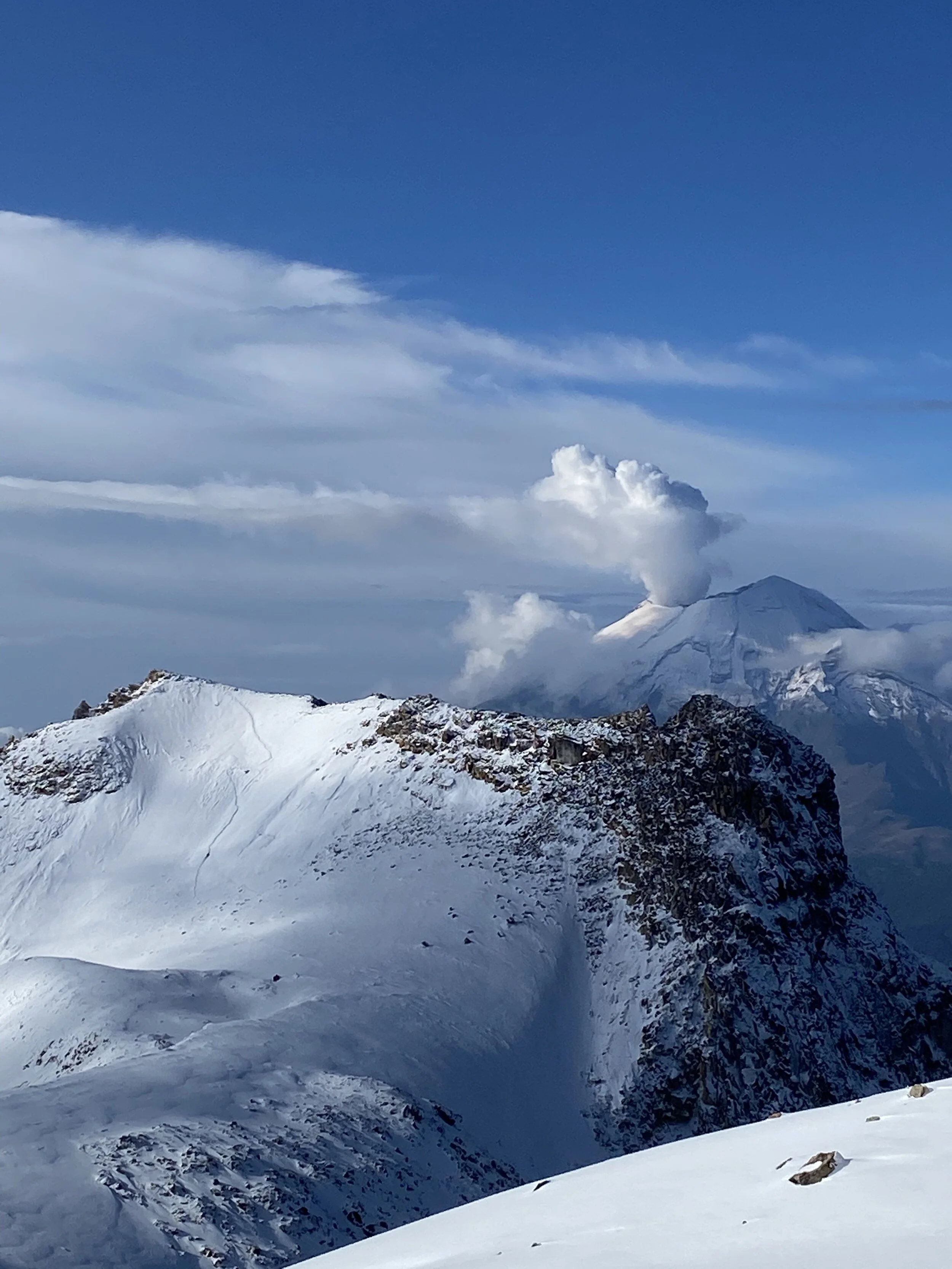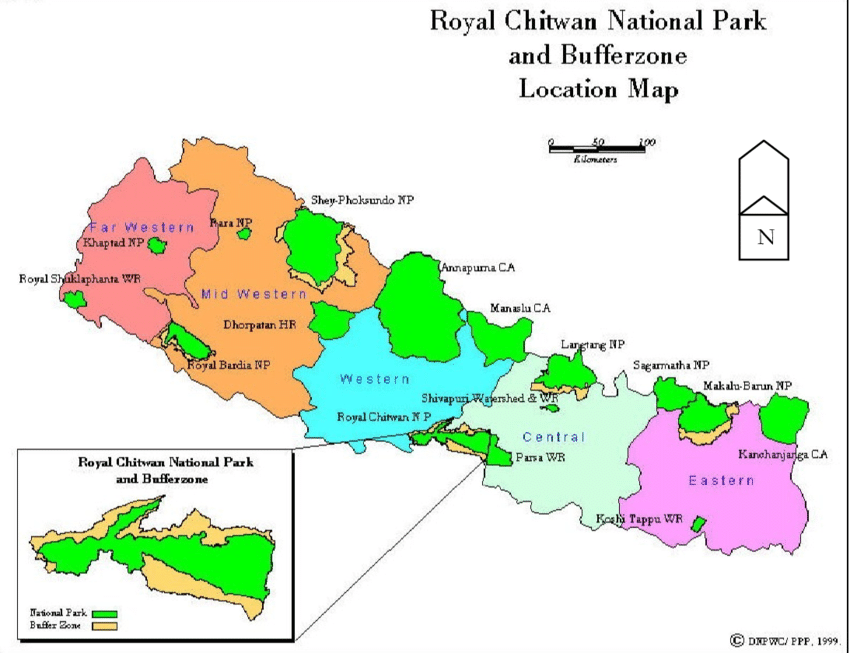Los Nevados National Park is a large high plateau in the middle of the Andean Spine of Colombia. At present (2021), the other popular areas for trekking are closed (Nevado Cocuy and higher ranges of Sierra Nevada de Santa Marta). This leaves the Nevados NP as a good option for multi-day trekking.
Our goal was to climb the Navado del Tolima, one of the volcanos on the plateau, with an altitude of 5,200m. My timing was not ideal as I was there outside of the normal climbing season of December - January. The mountain is quite isolated. It is 30-40km from the trailhead. Due to the amount of rain and the boggy nature of the high plateau, getting to the basecamp was quite an effort. It involved gaining 2,500m of elevation, liquid trails full of slippery volcanic mud, rain and fog, loosing trails and weather changes every 20min or so. All at an altitude of 4000m and above. Overall, it was a very hard trek for me due to the muddy conditions. We set out to climb the mountain only to be turned around by a snow storm at 4500m.
Despite the unsuccessful attempt to get to the top of Tolima, it was a fantastic trek through some very unique ecosystem of the high Paramo forest. The high Paramo forest is home to rare plants and trees that are found only in 3 countries in the world. Furthermore, the area is inhabited by cowboys who live is these very harsh conditions. The farms where they live have been there before the National Park was established. The locals are a small group of men and women who adopted to this extreme environment with very basic and limited use of technology. This was a very different experience for me from the other areas in the Andes further south.
The outfitter Andes World Travels and my guide Herman Vike have made my experience great despite all the challenges of the rainy season in the high plateau.






































